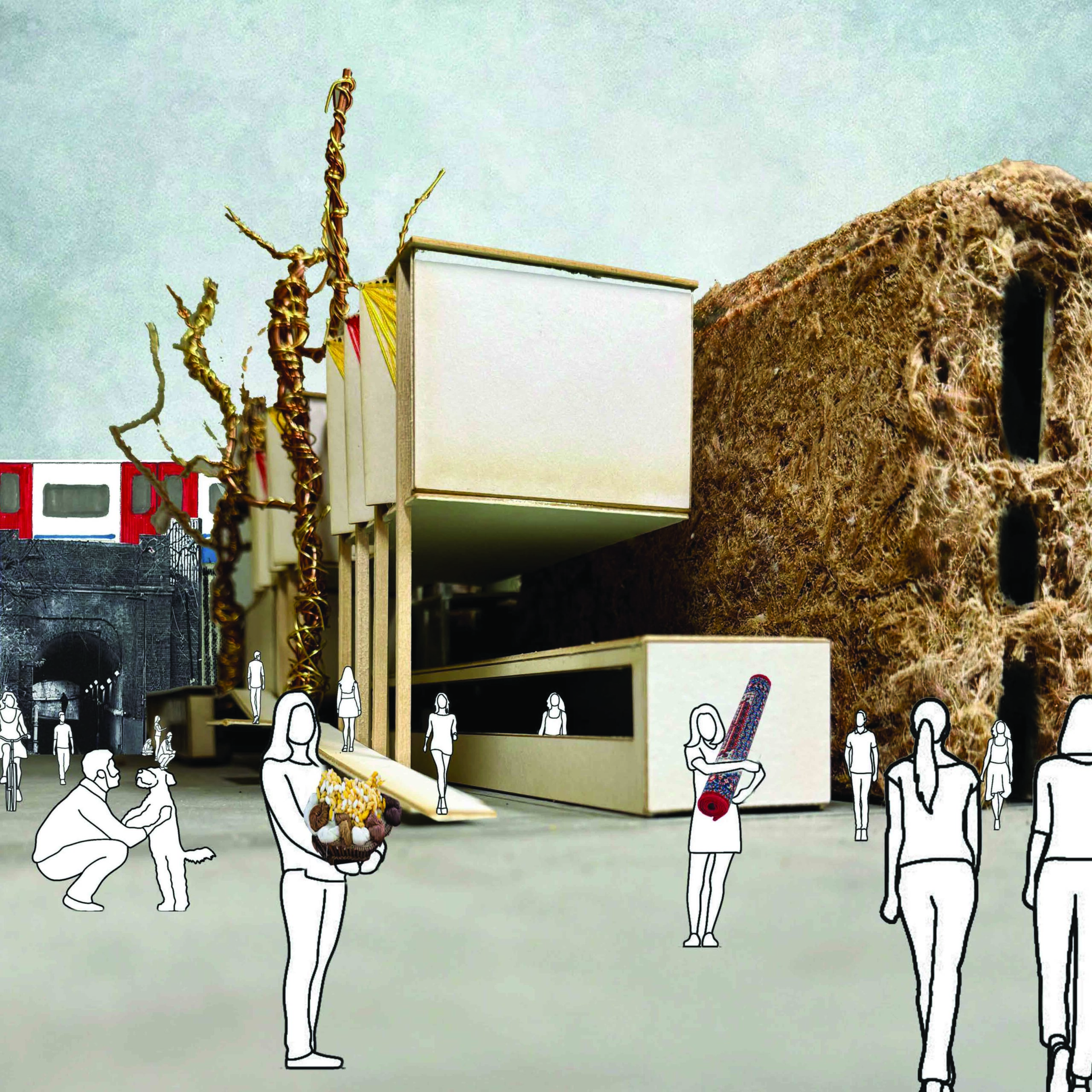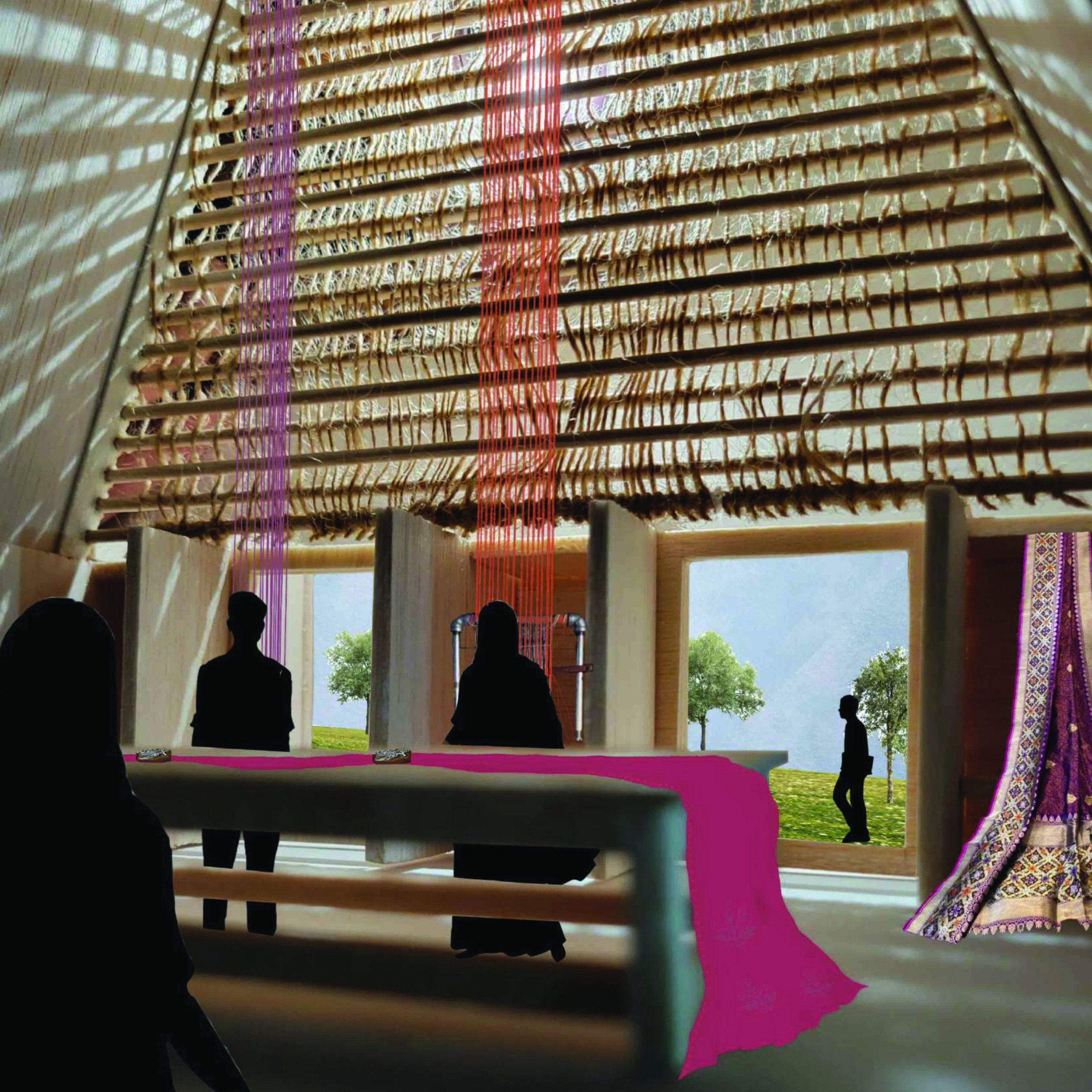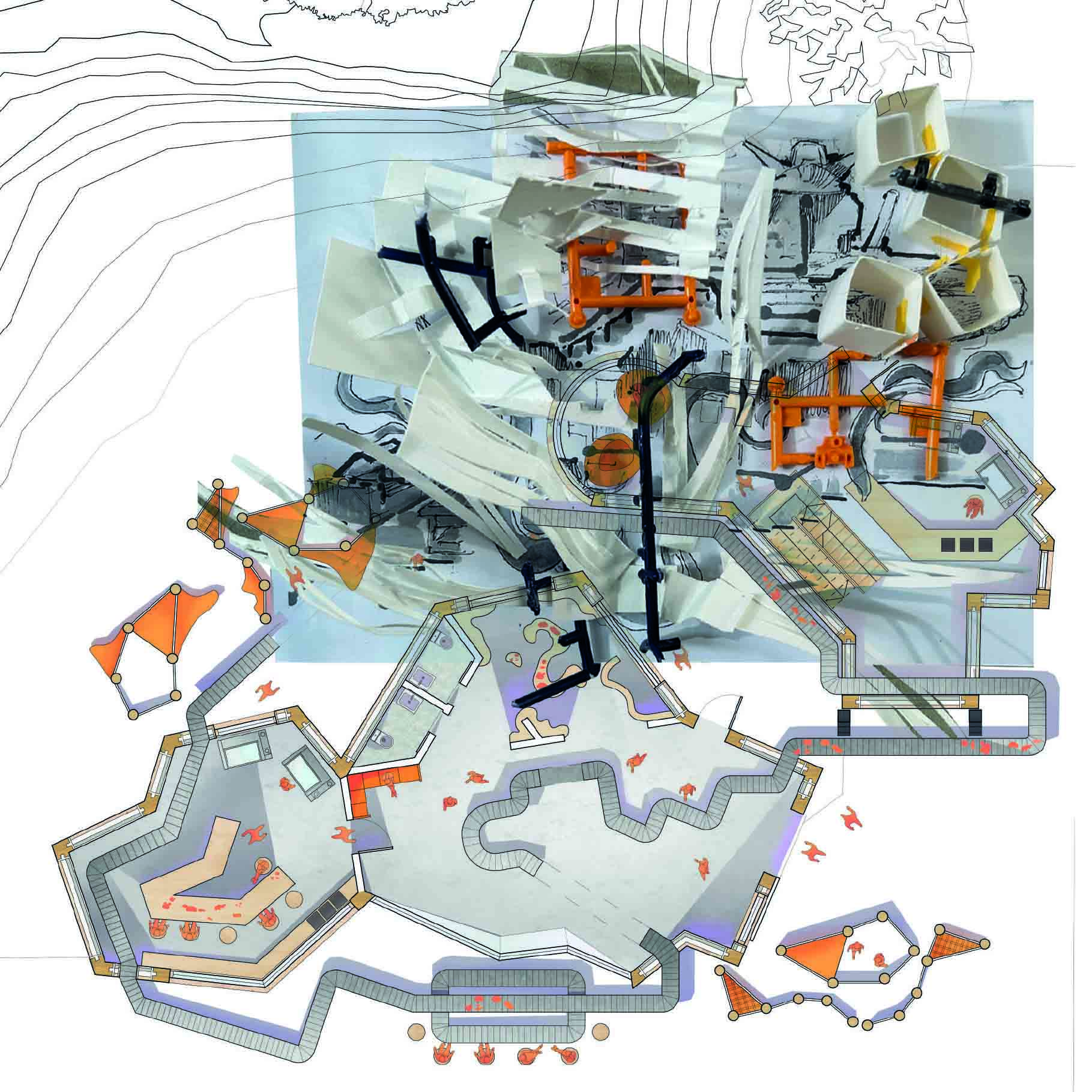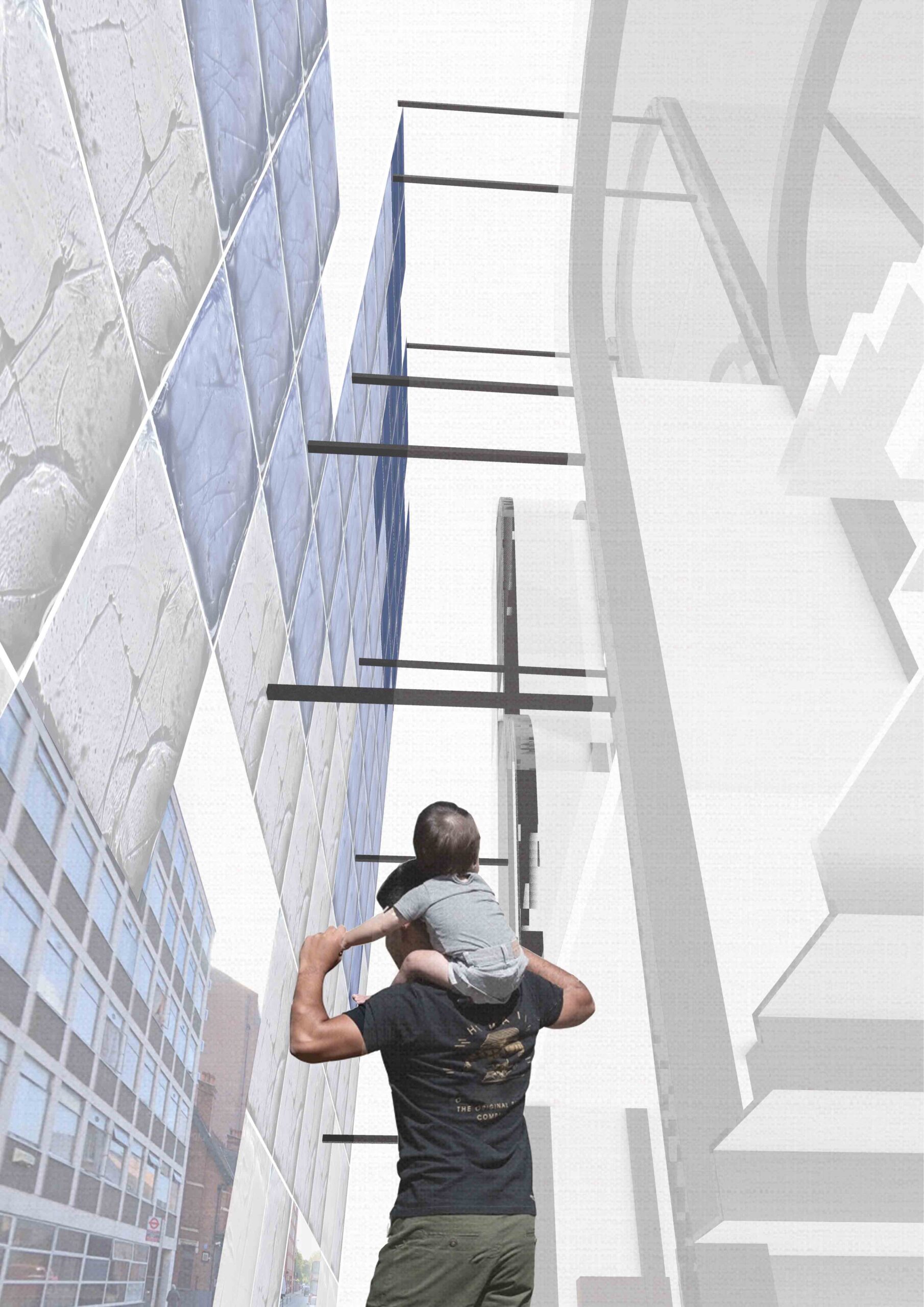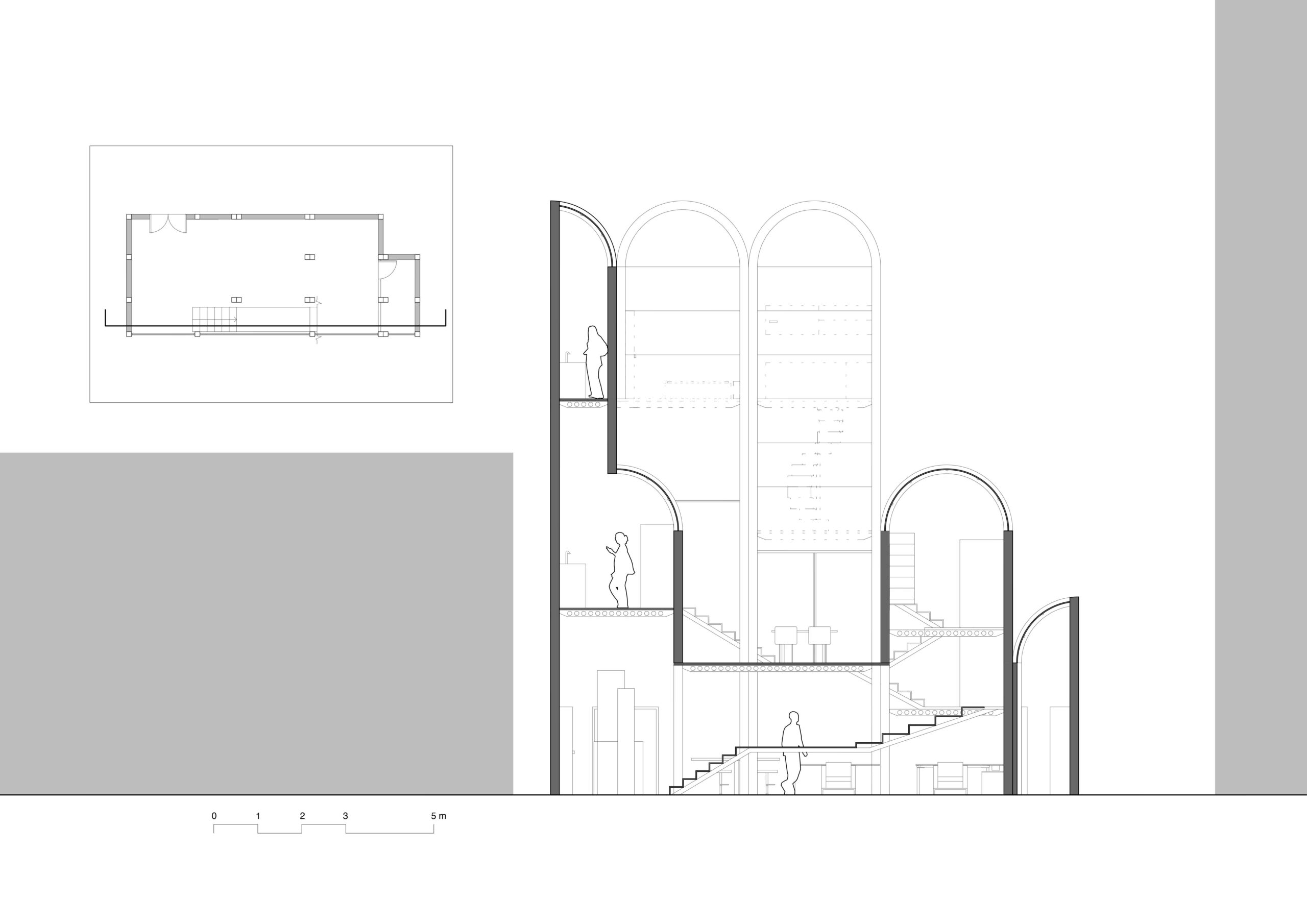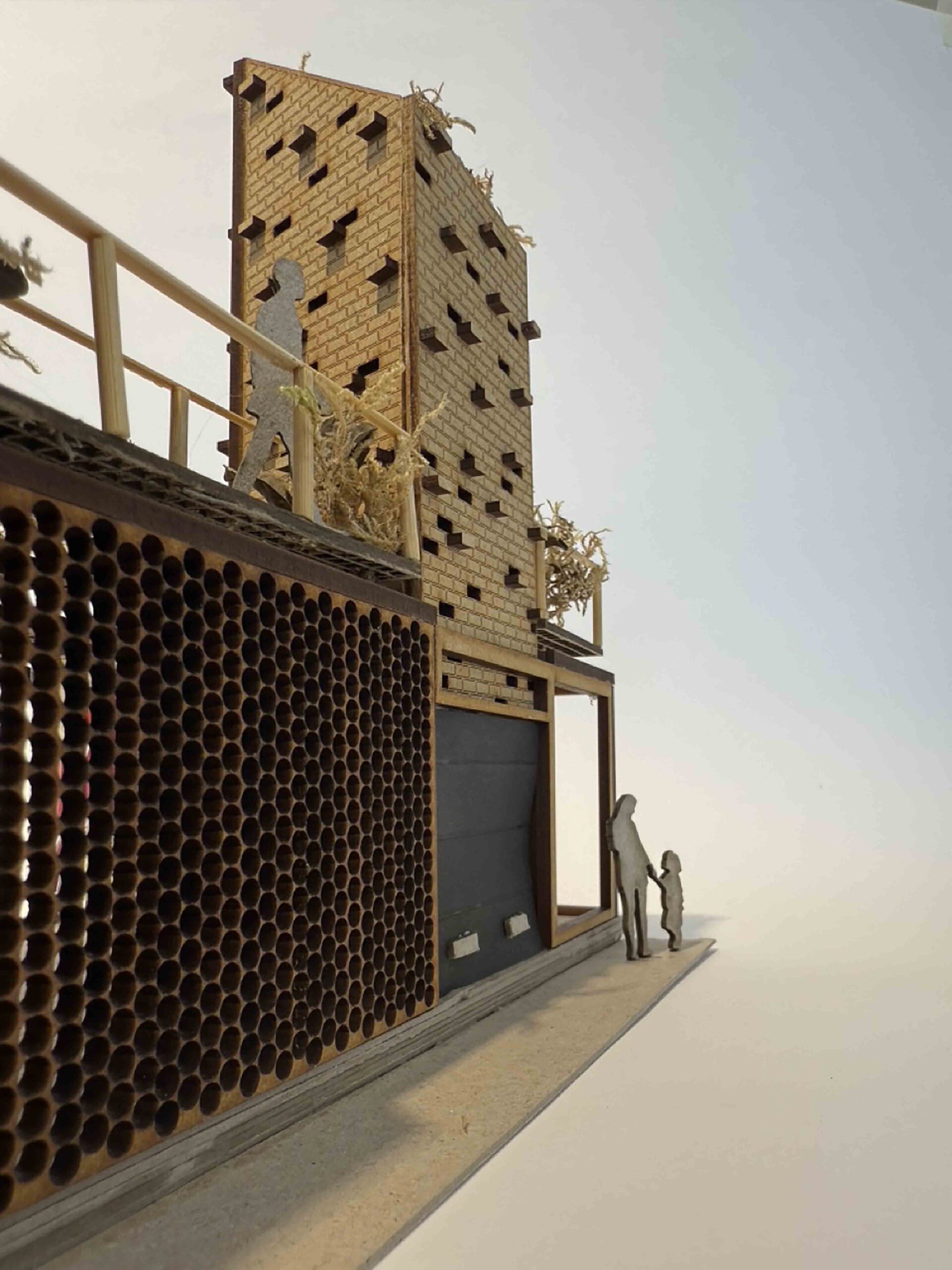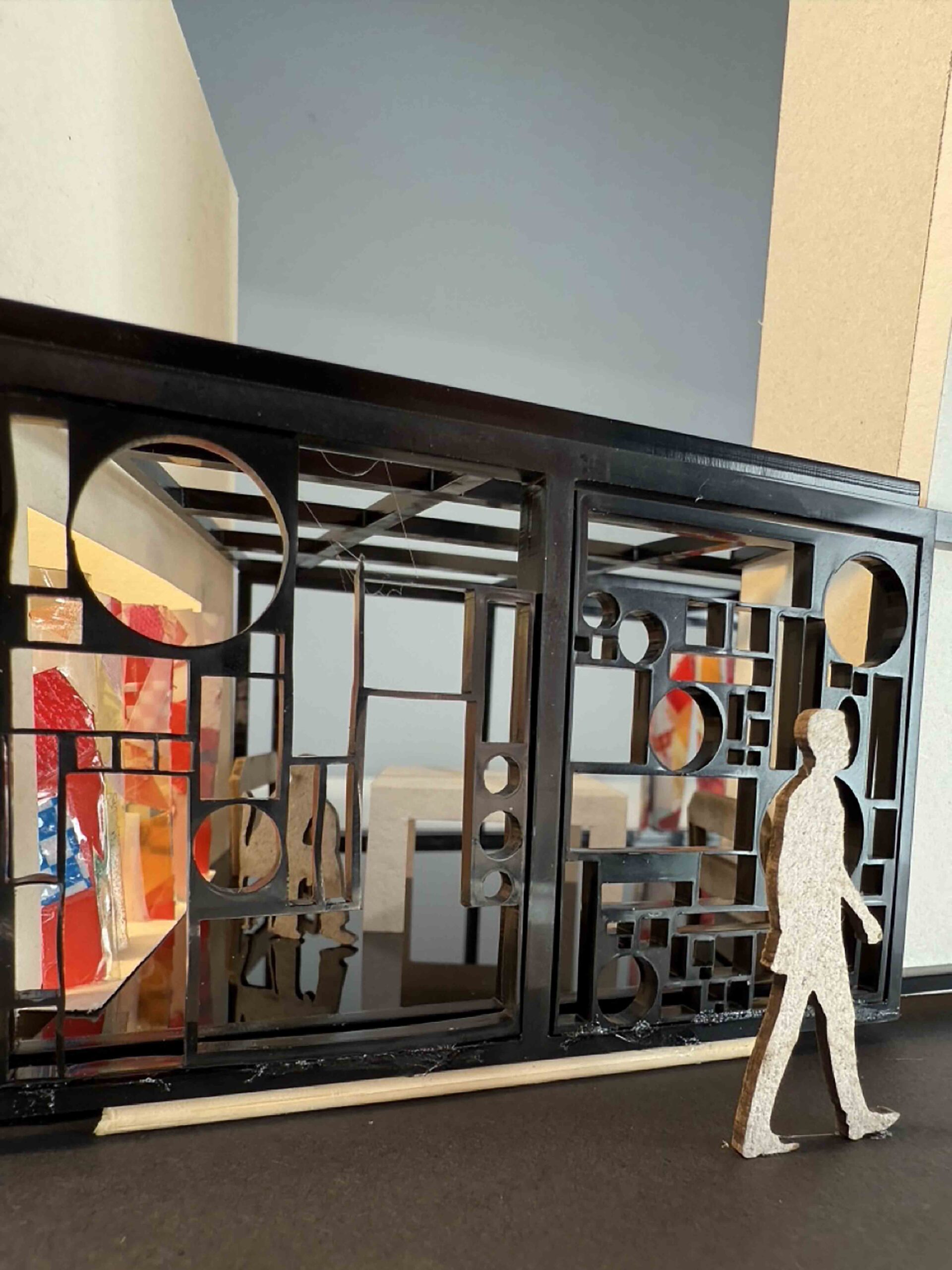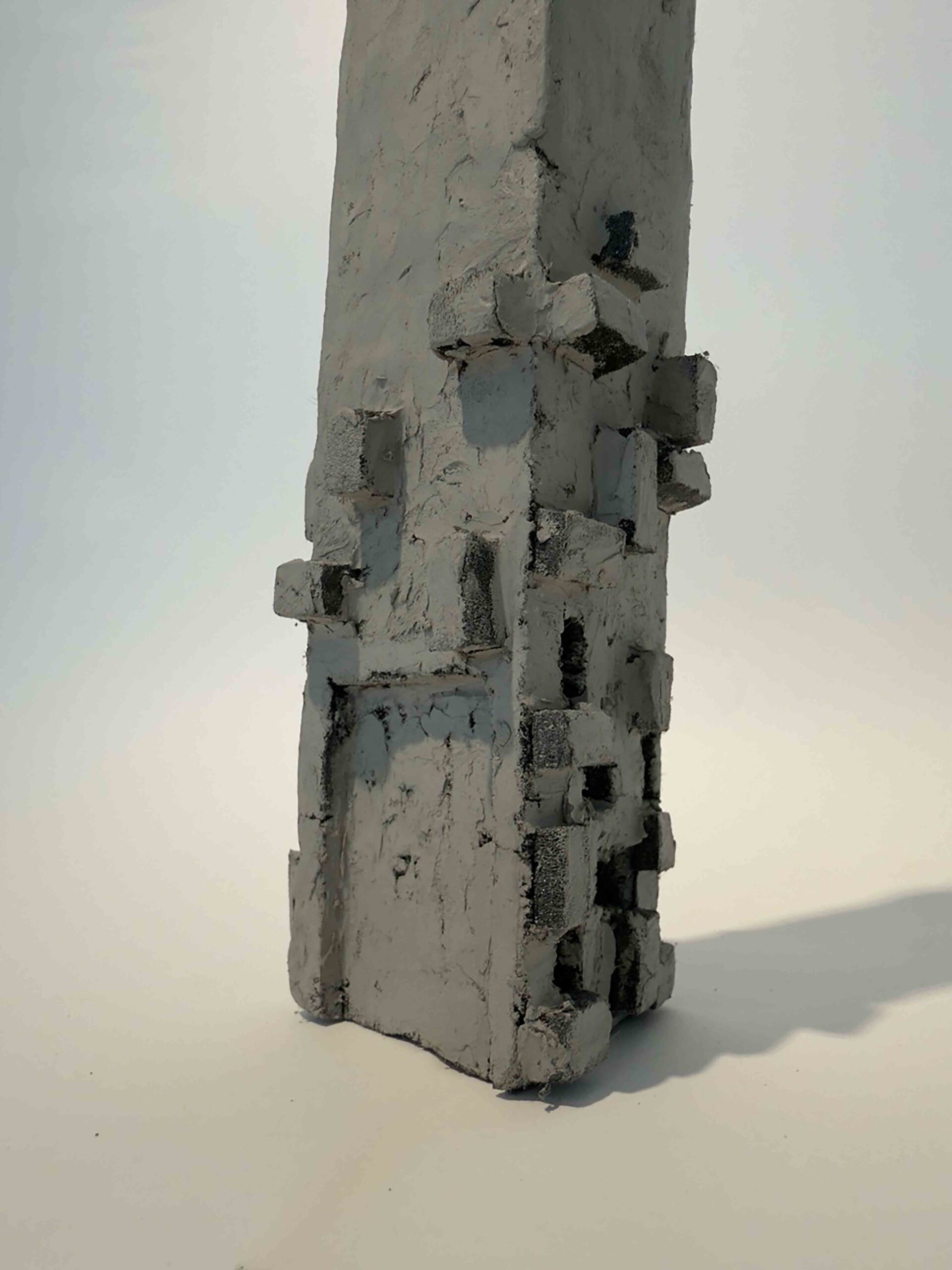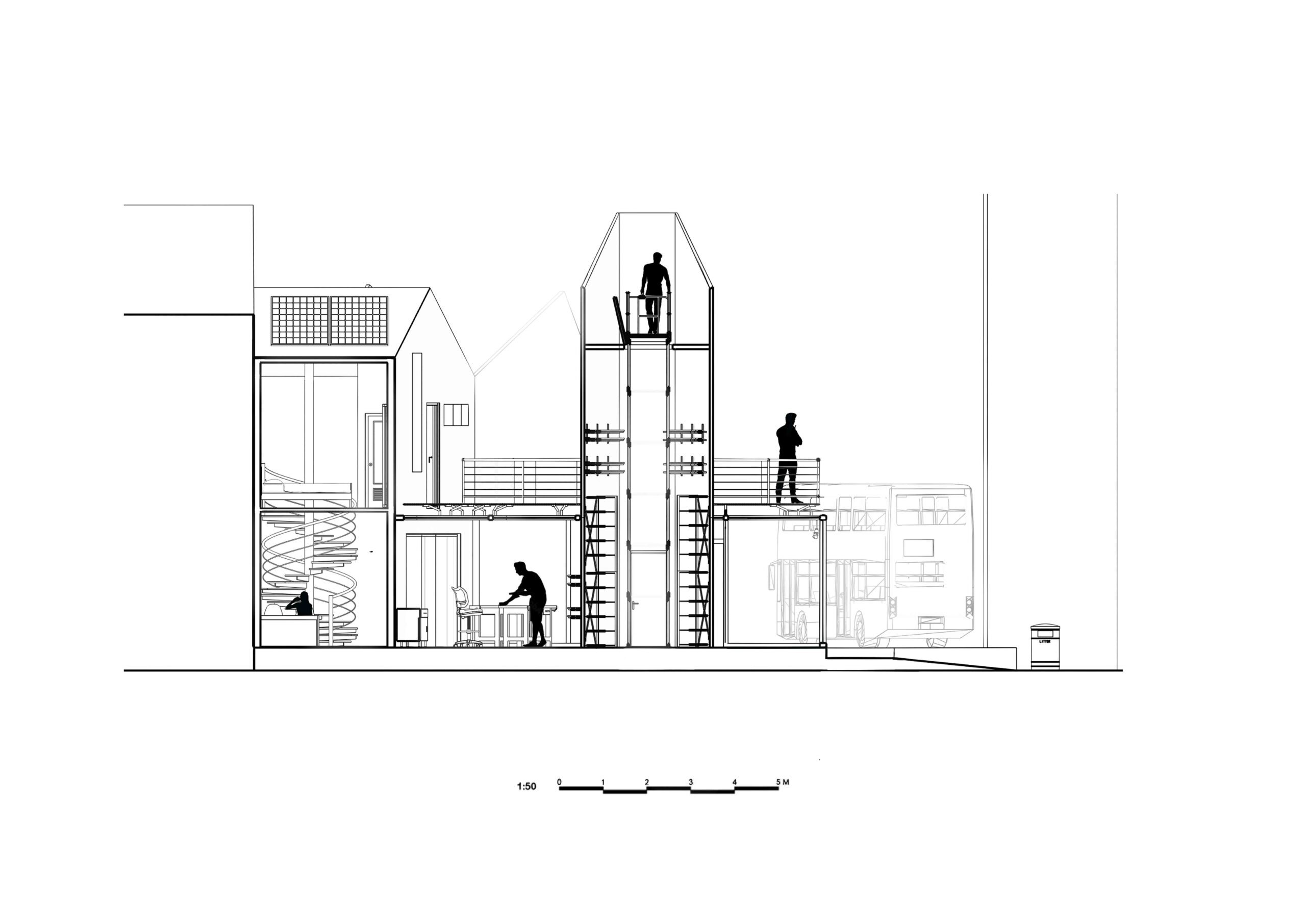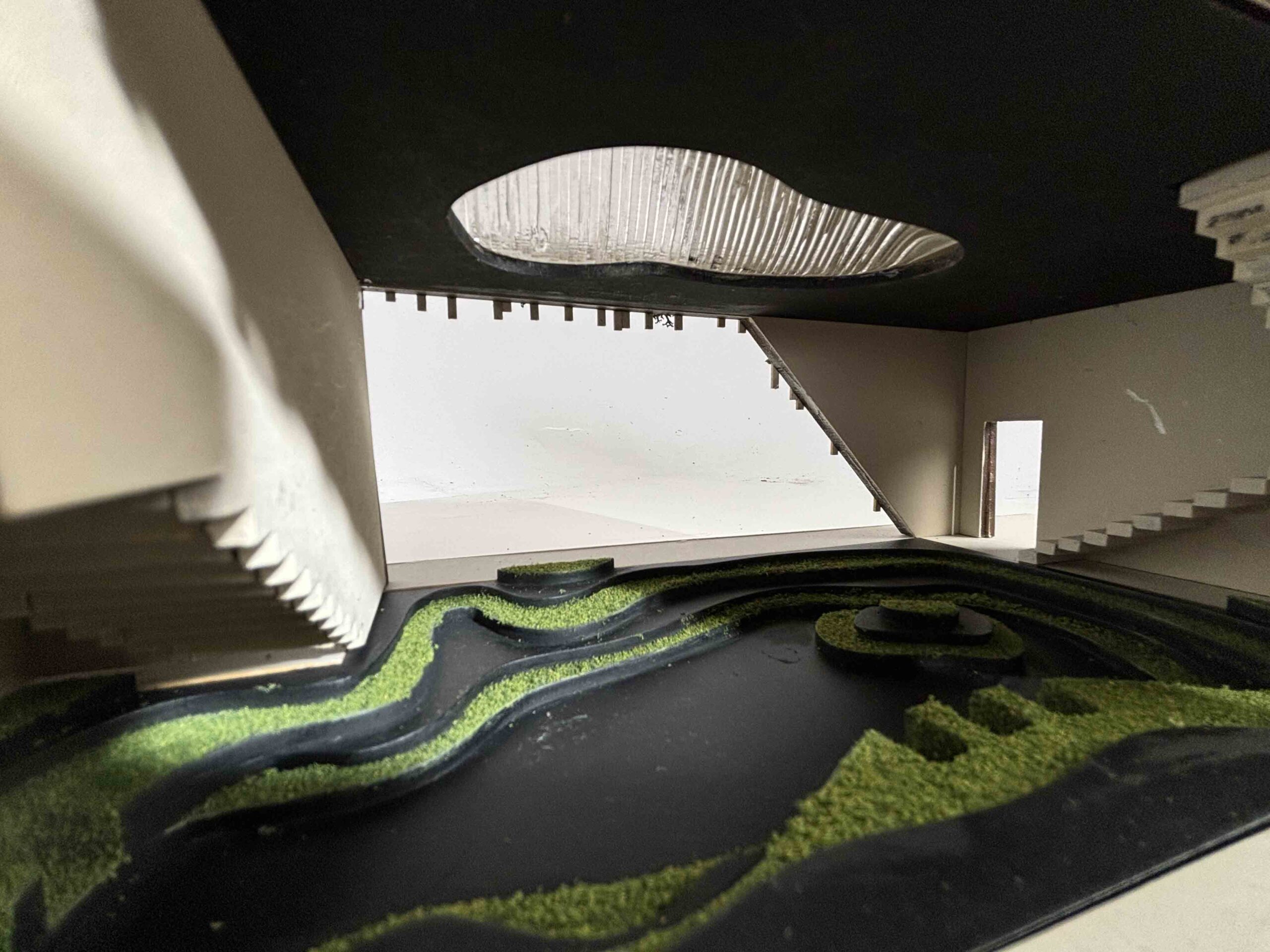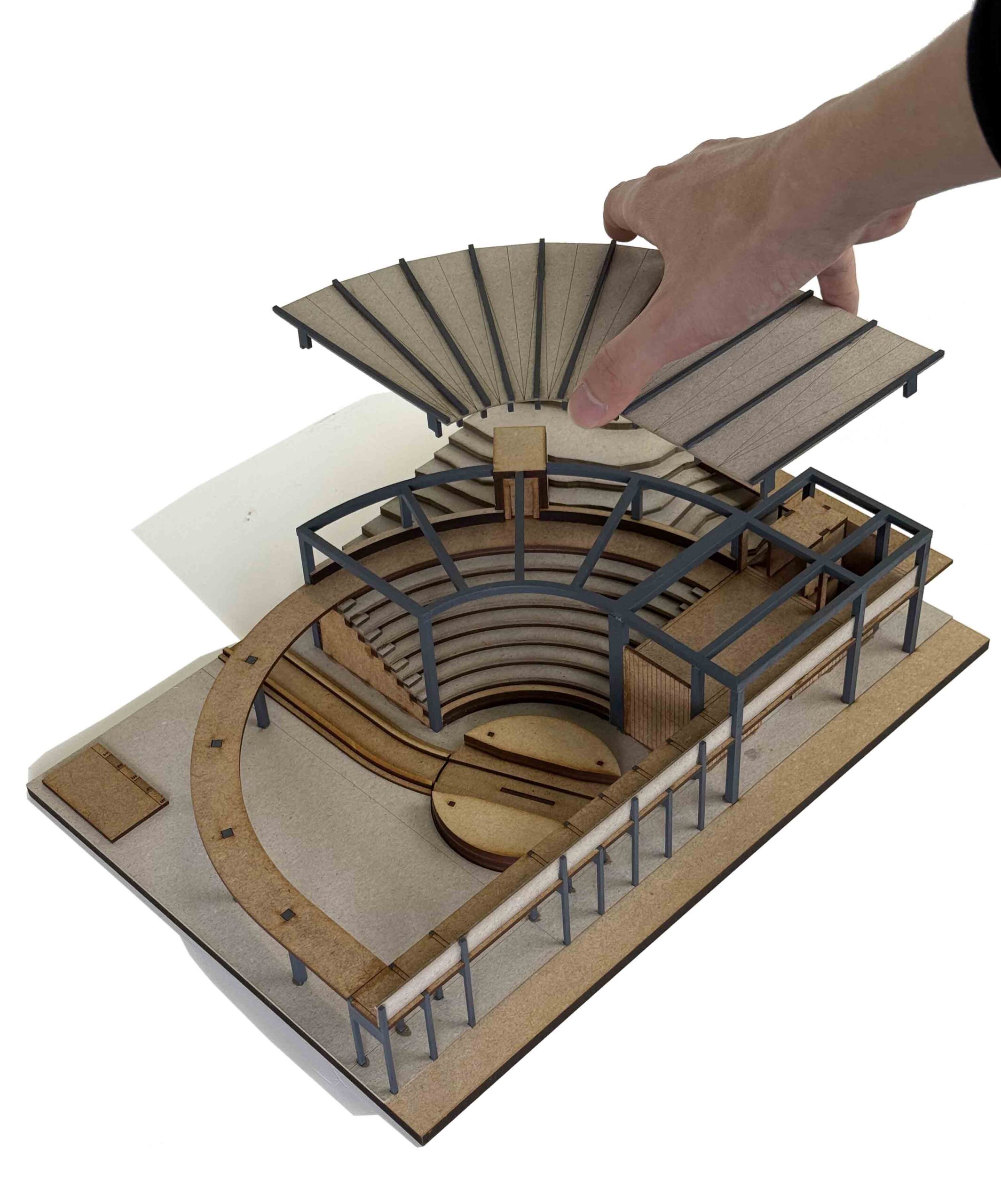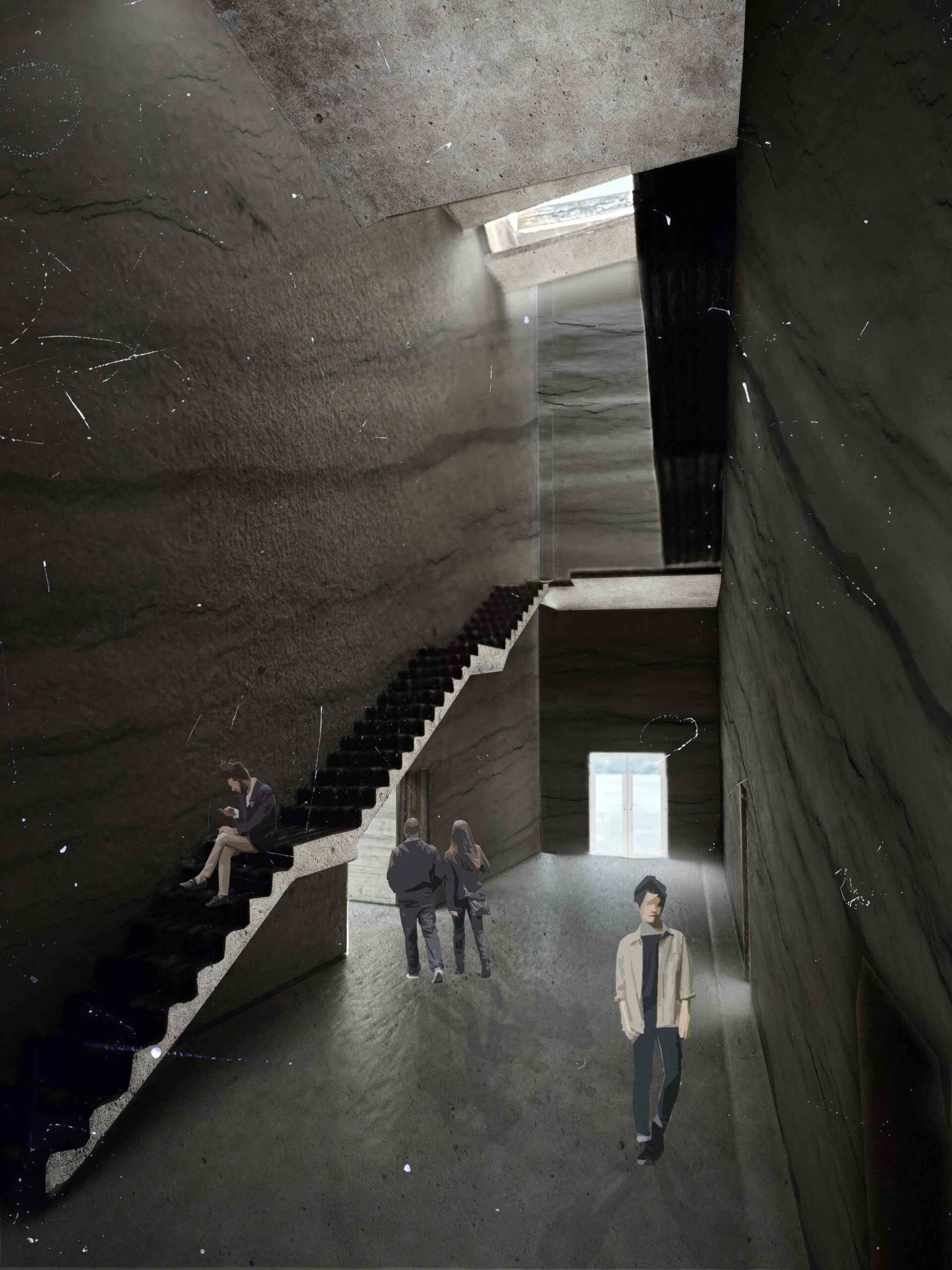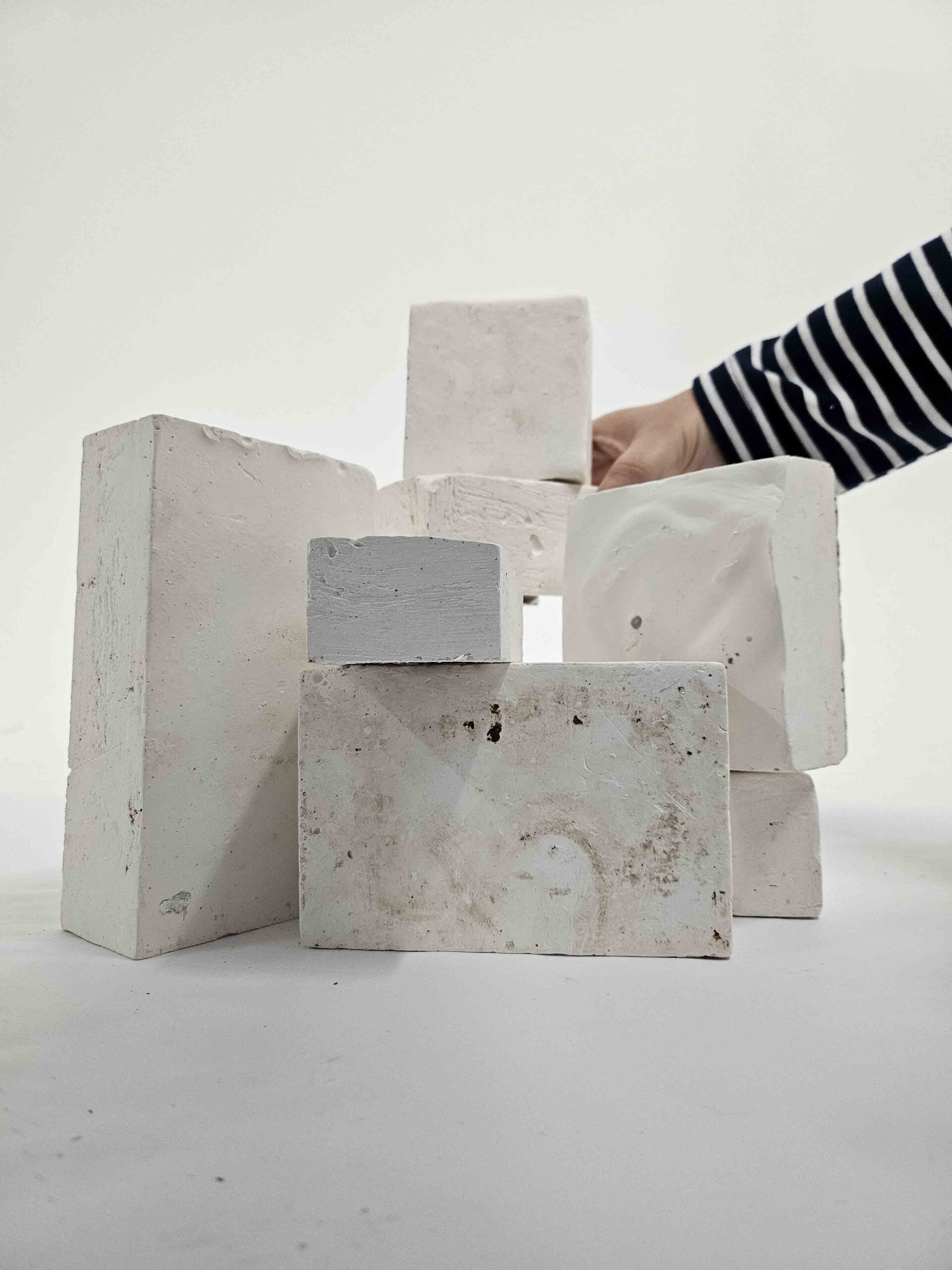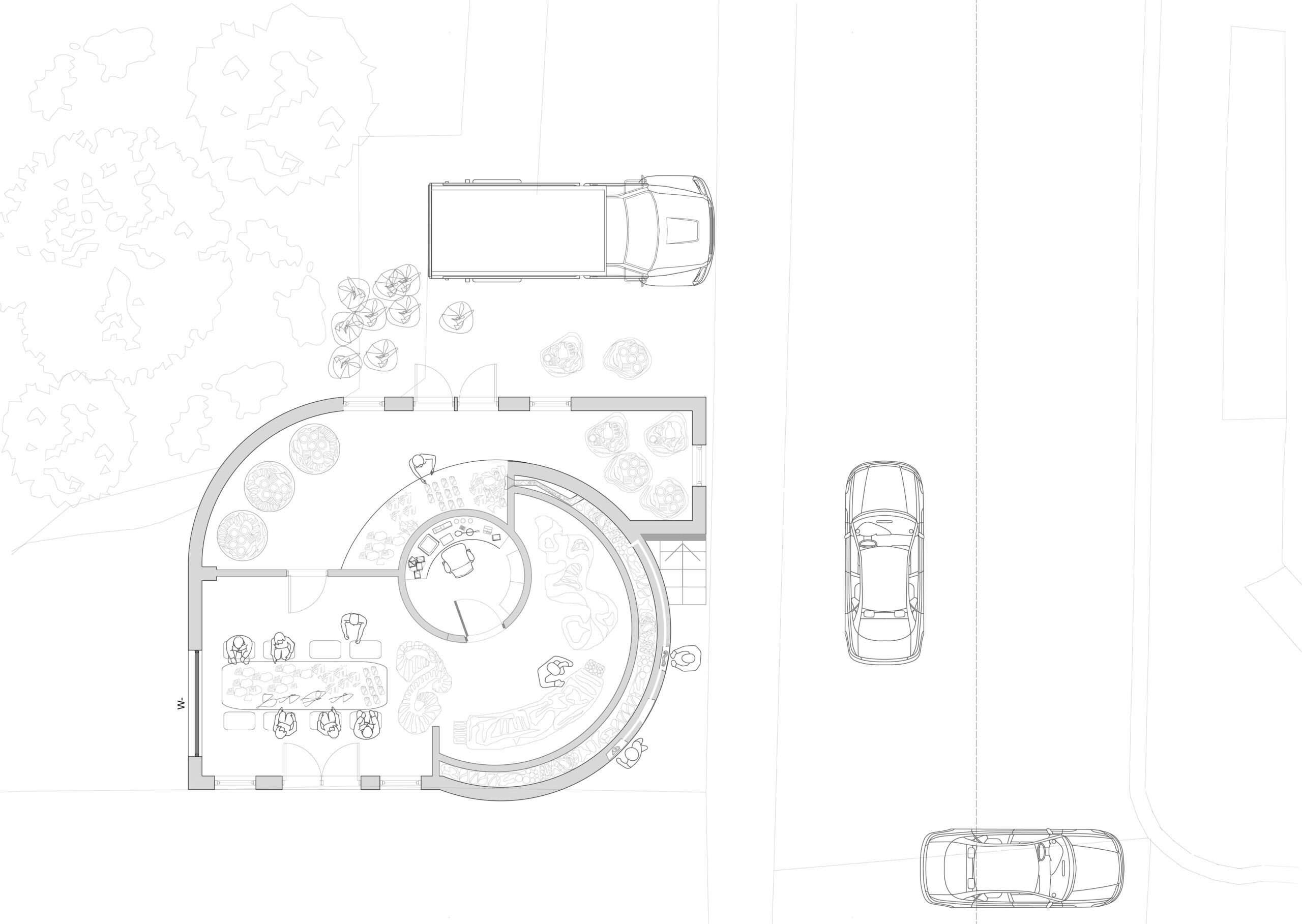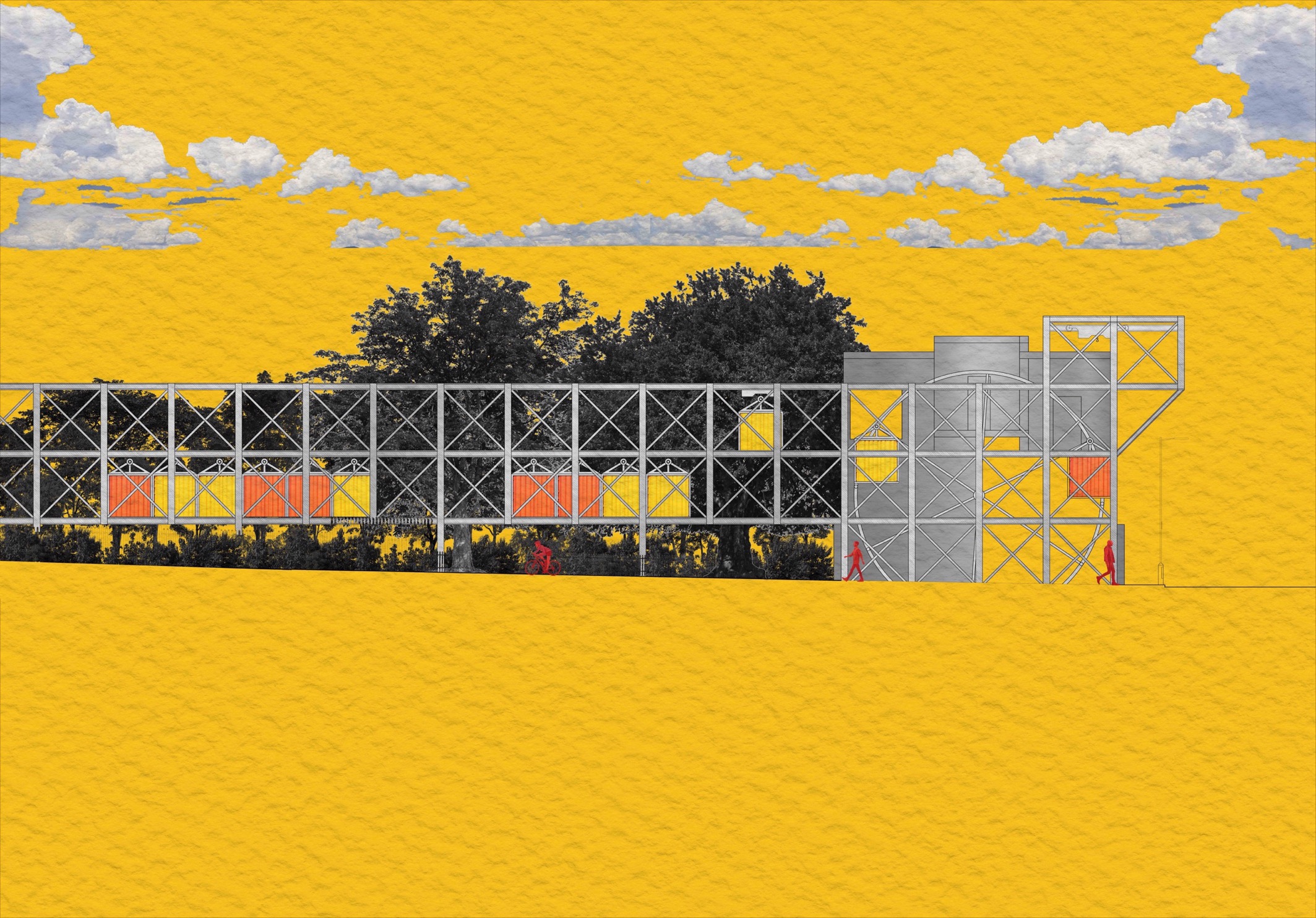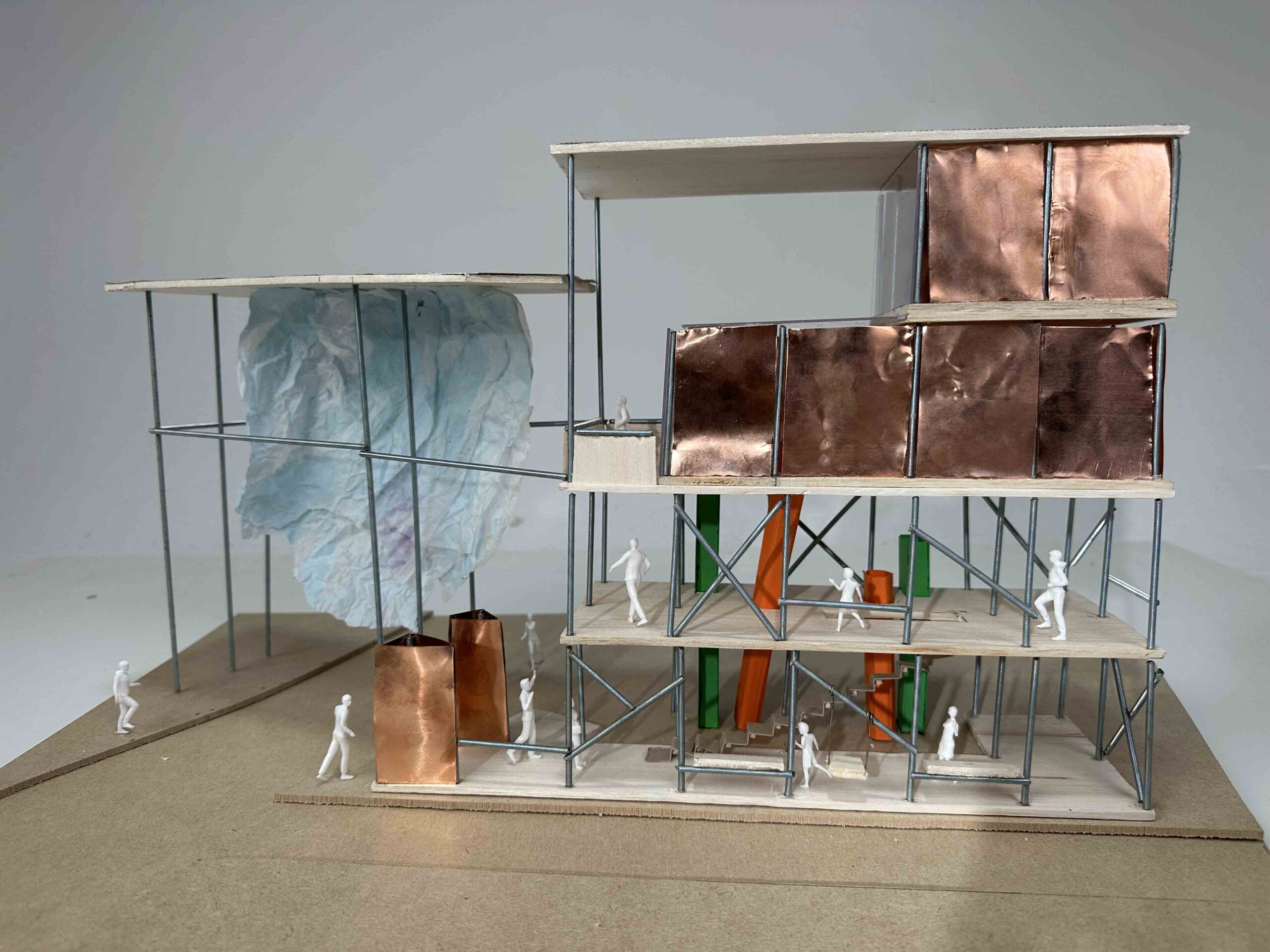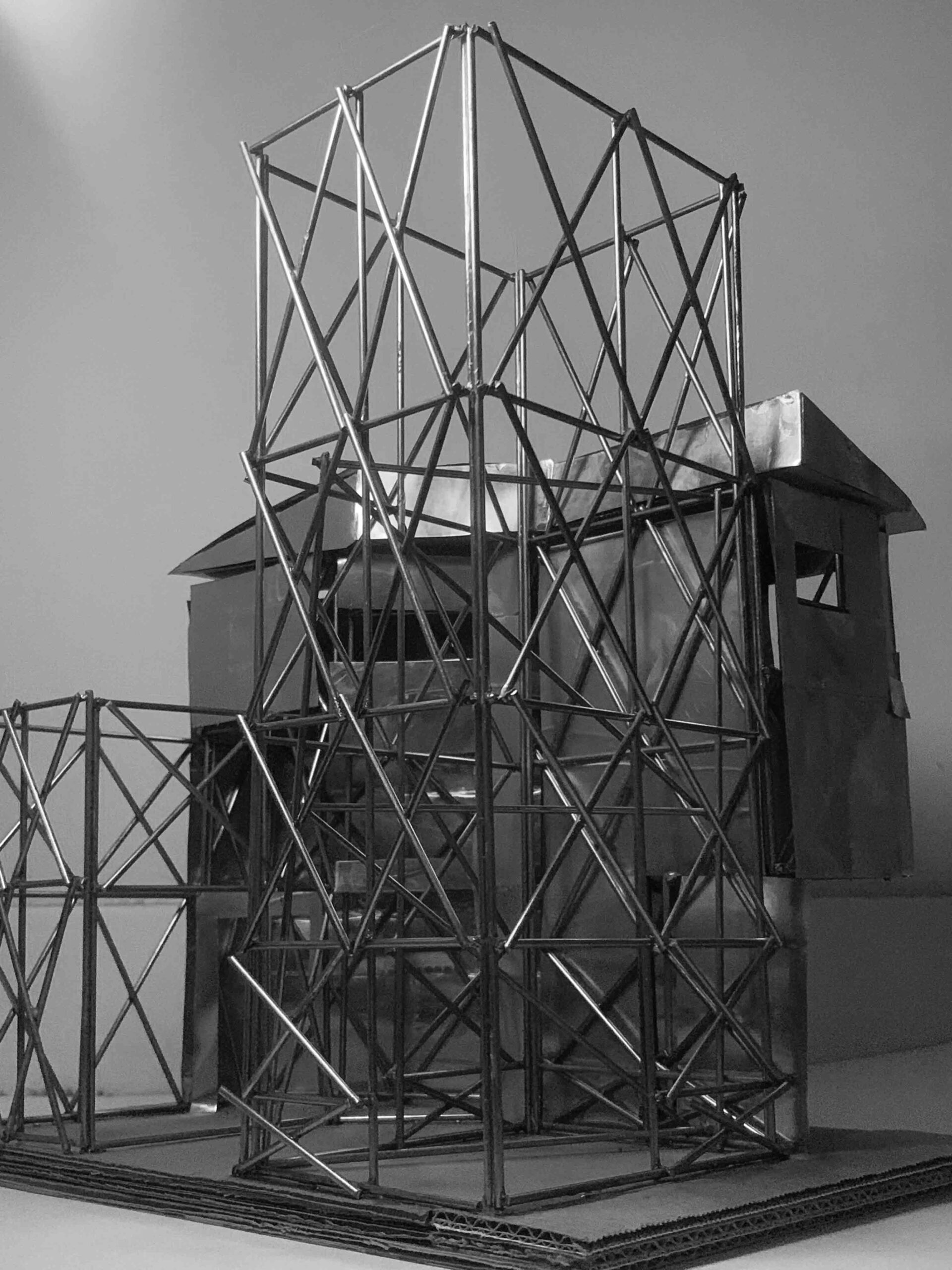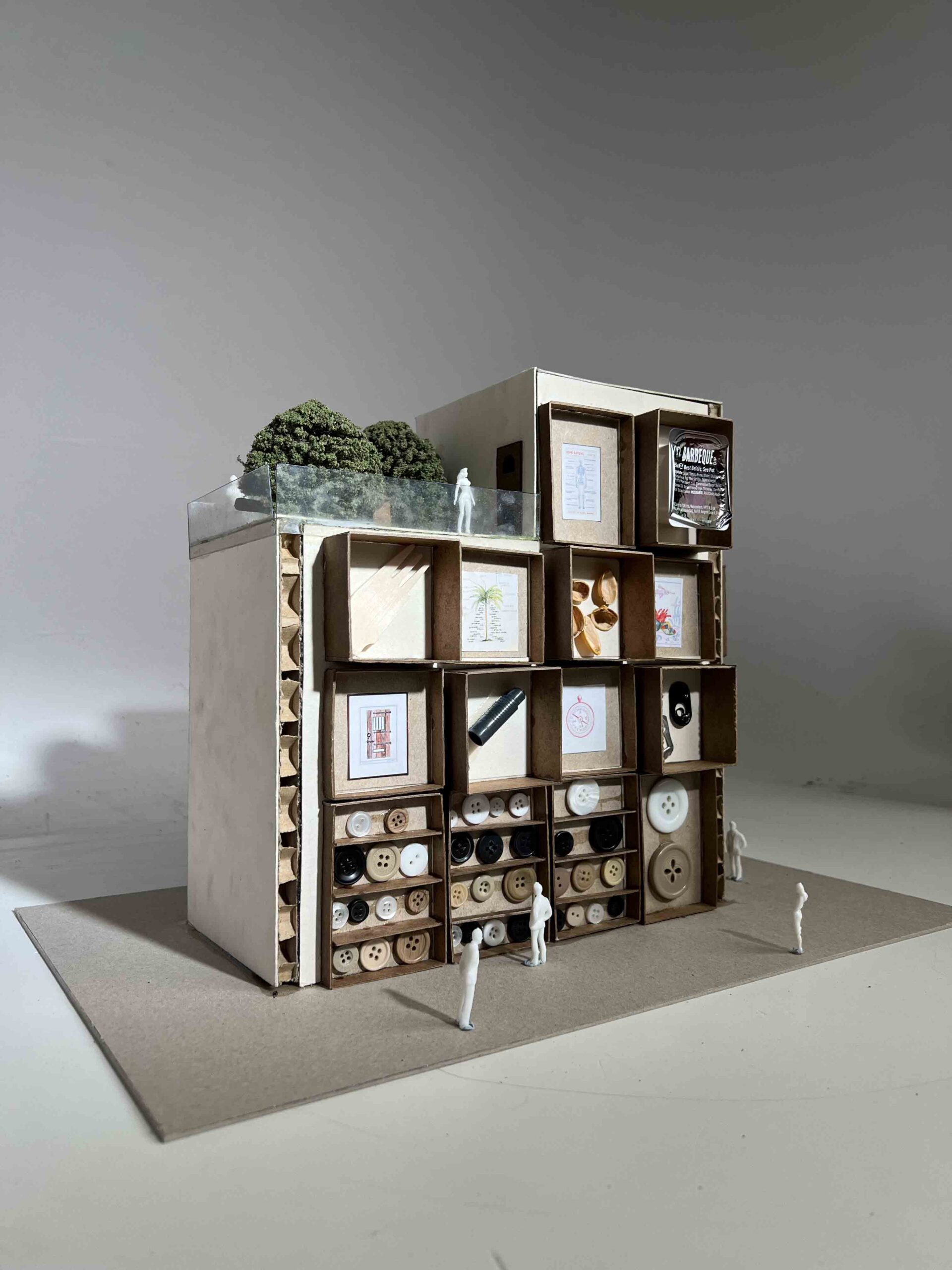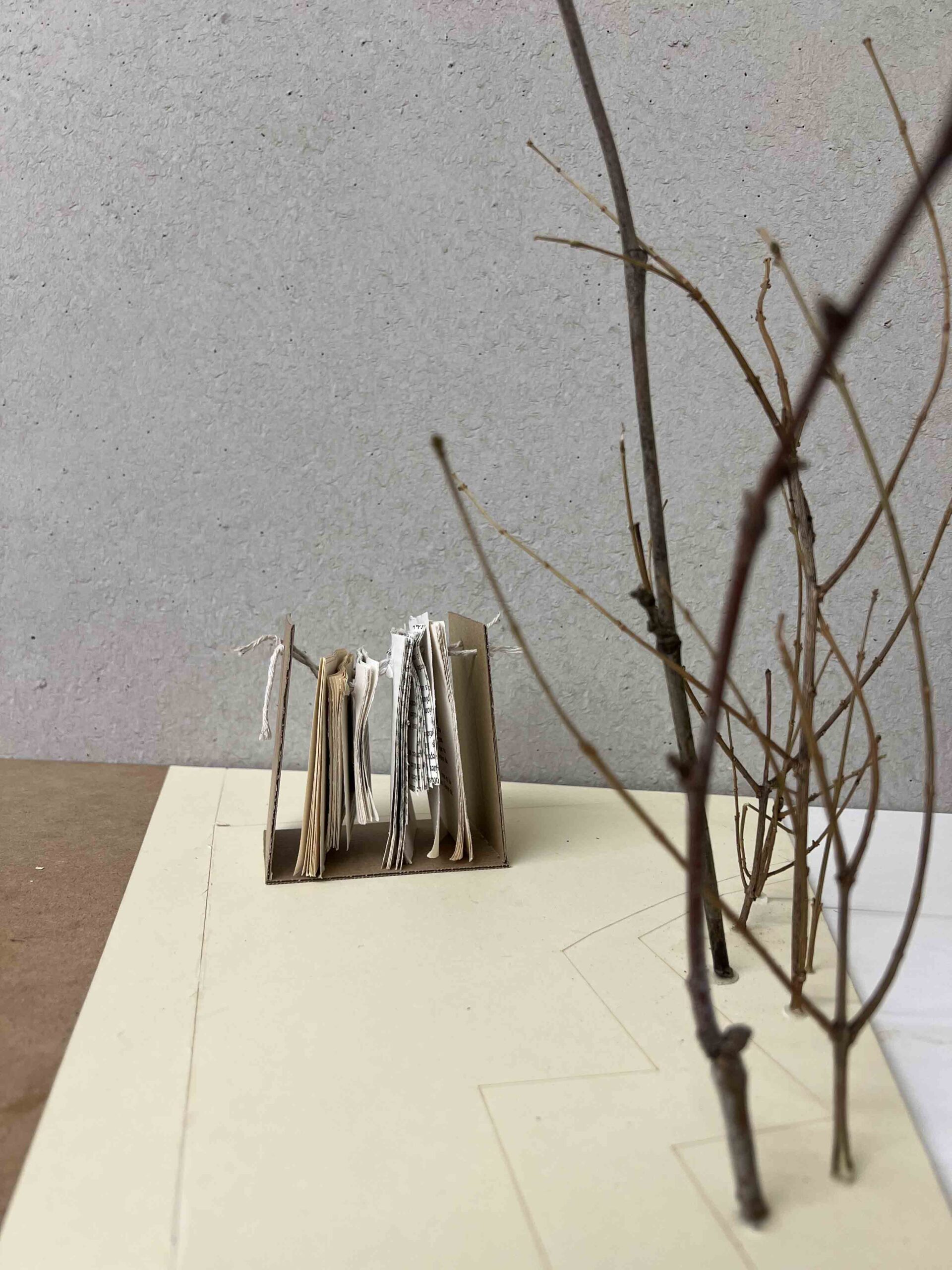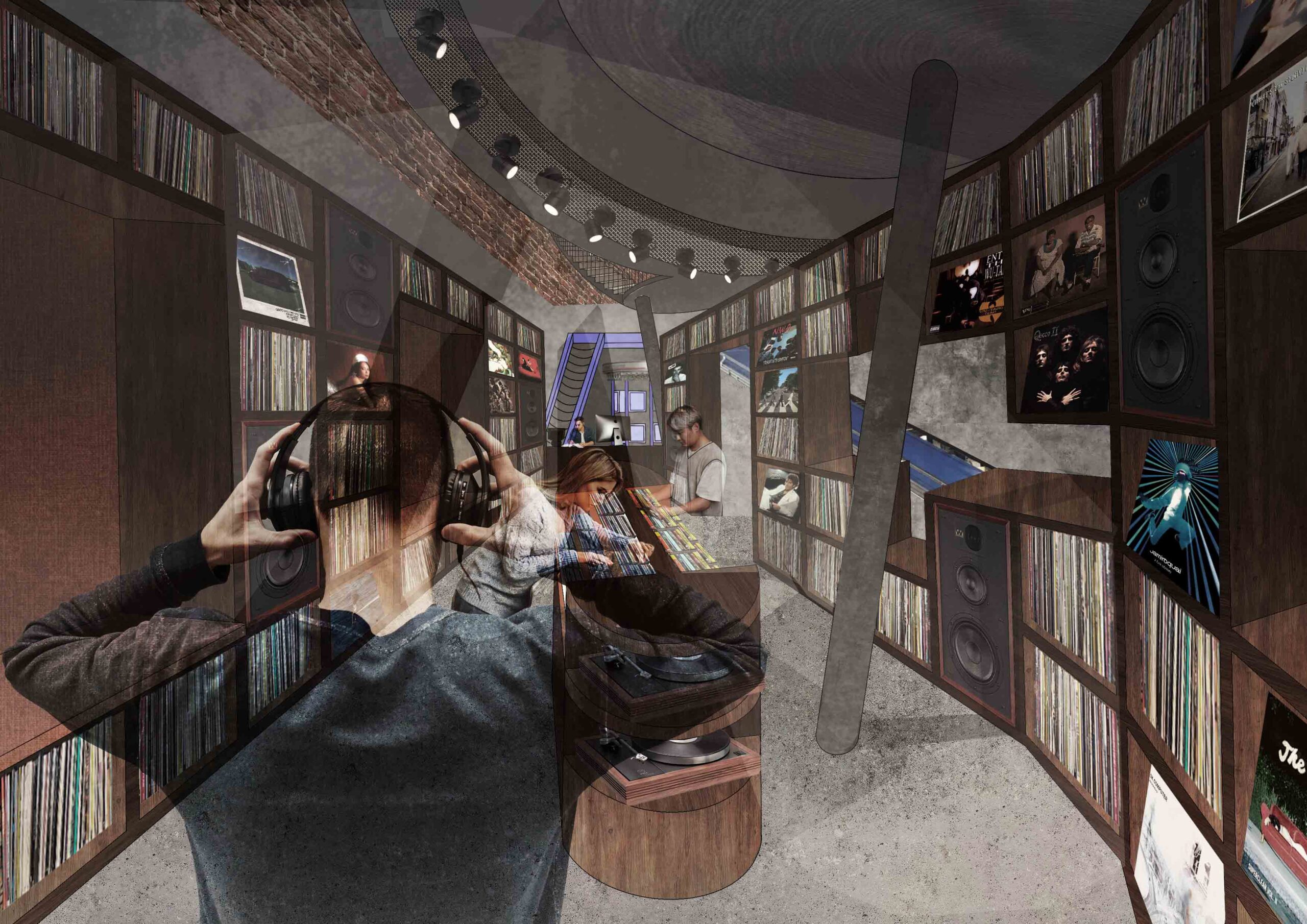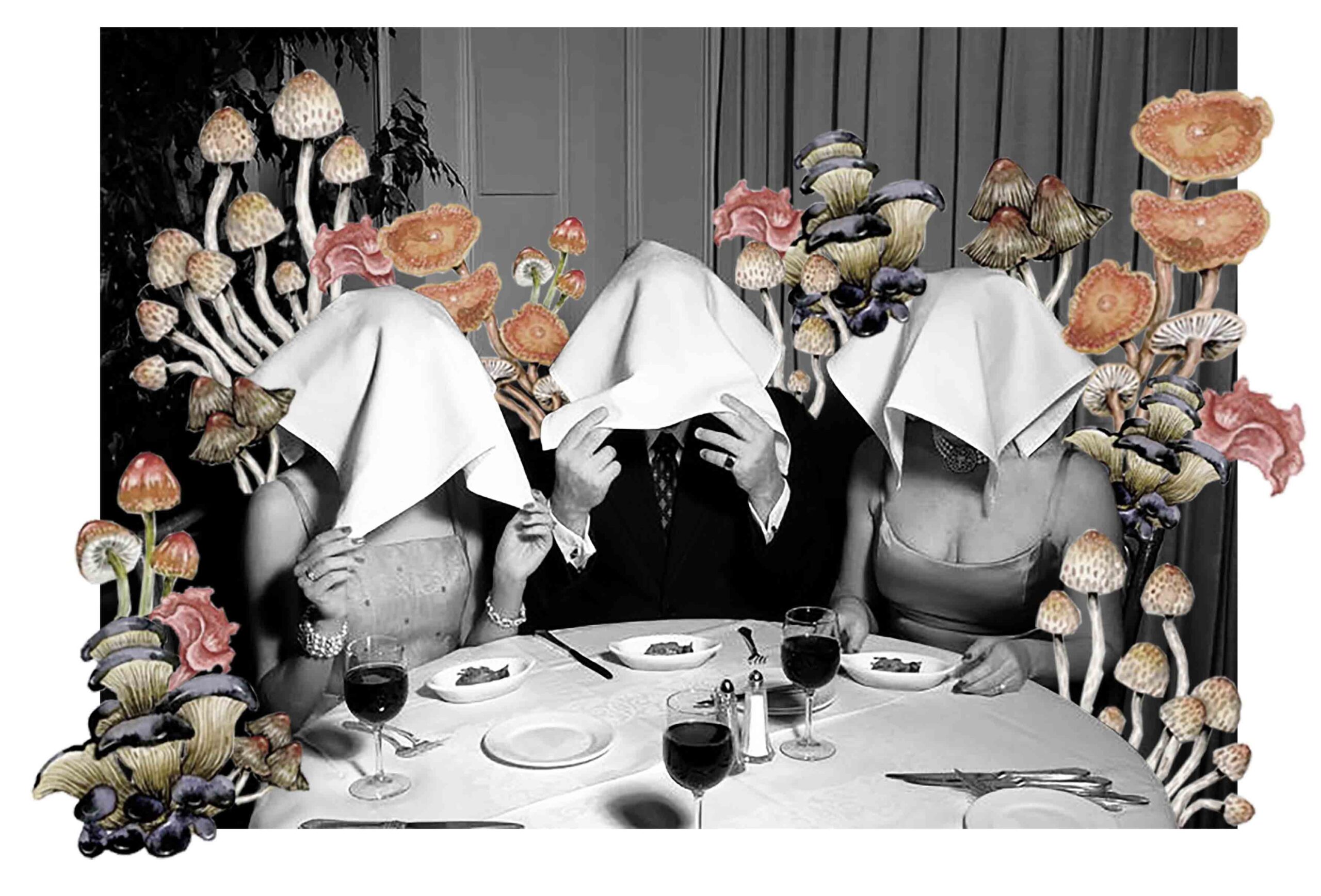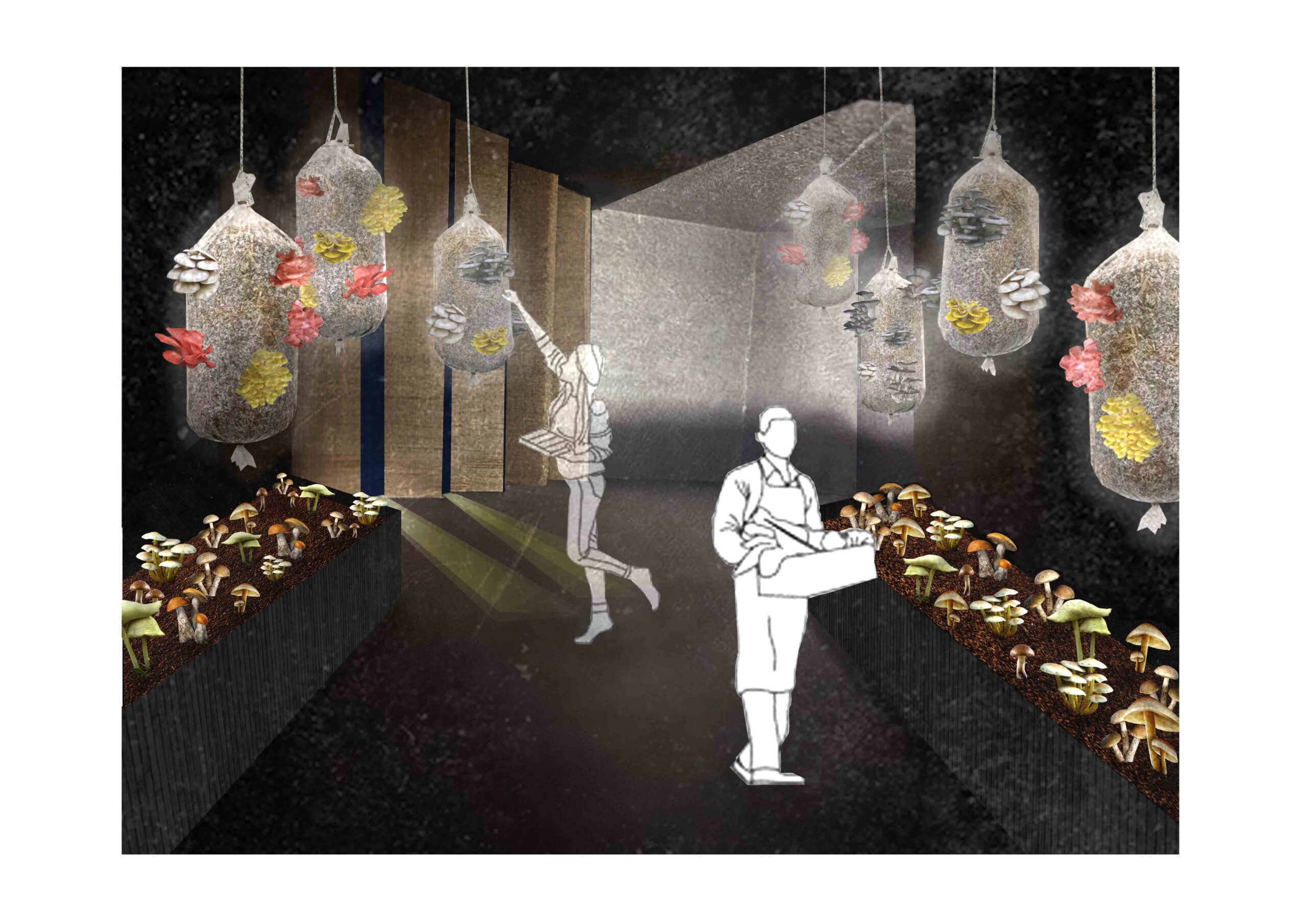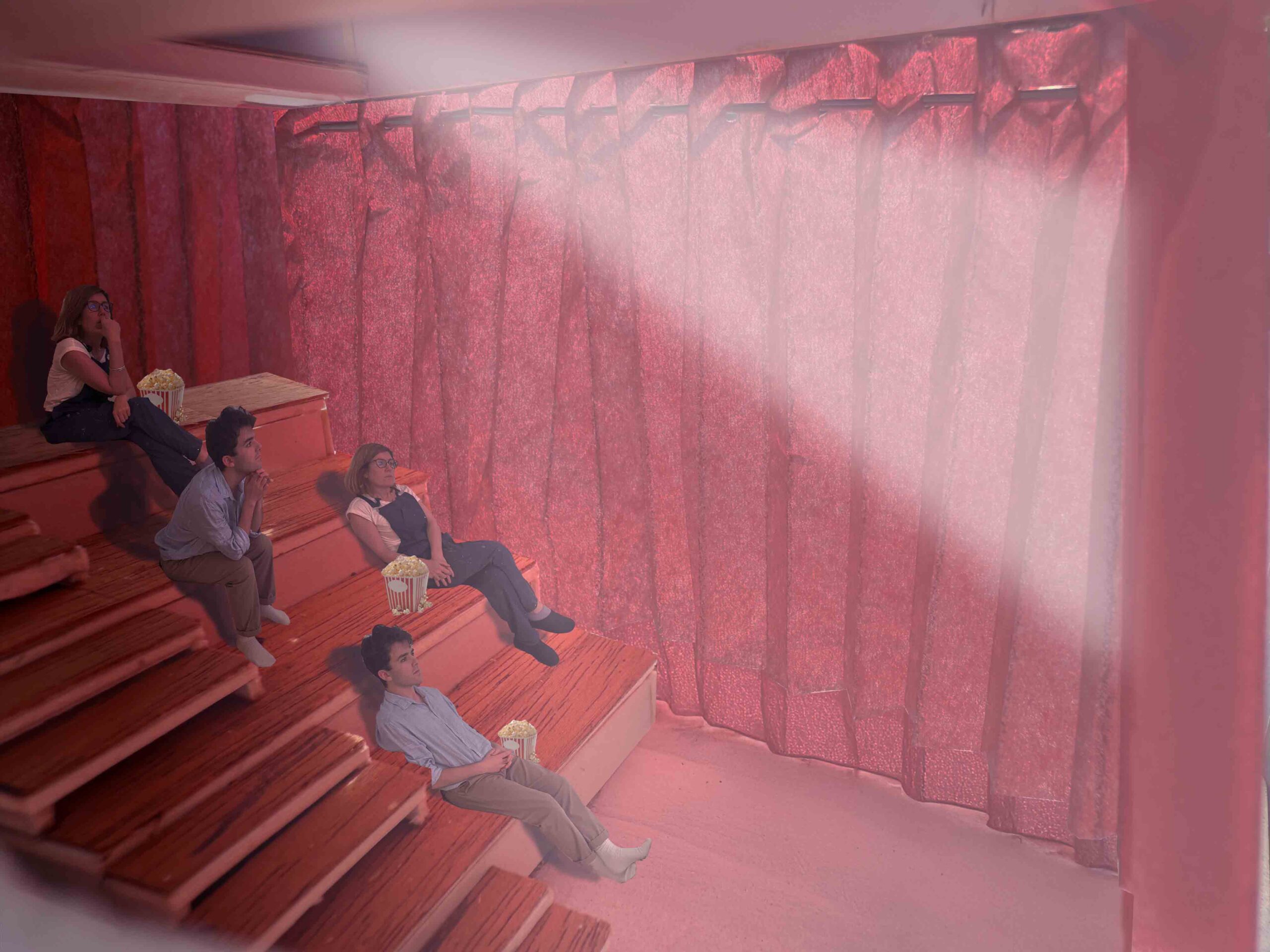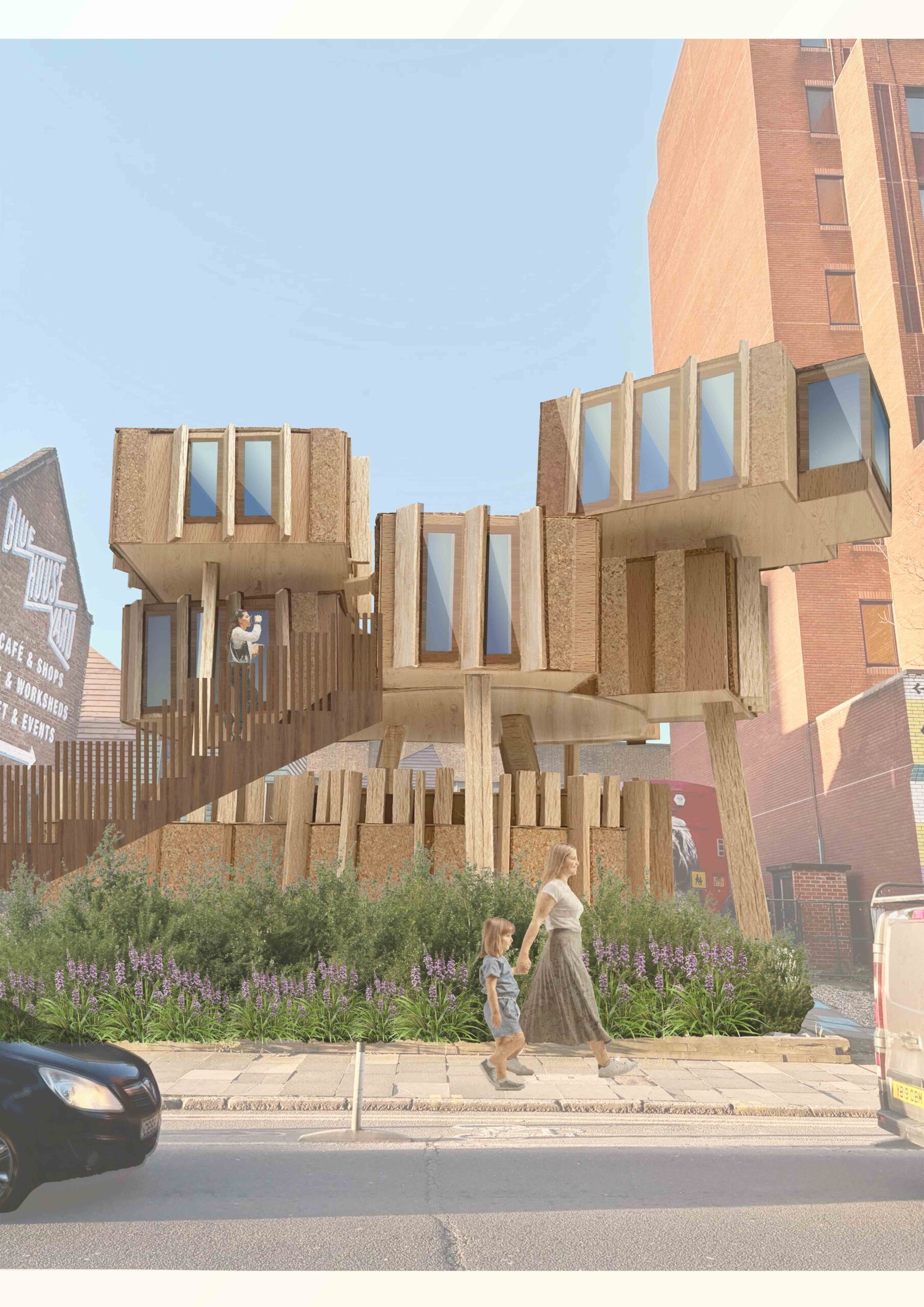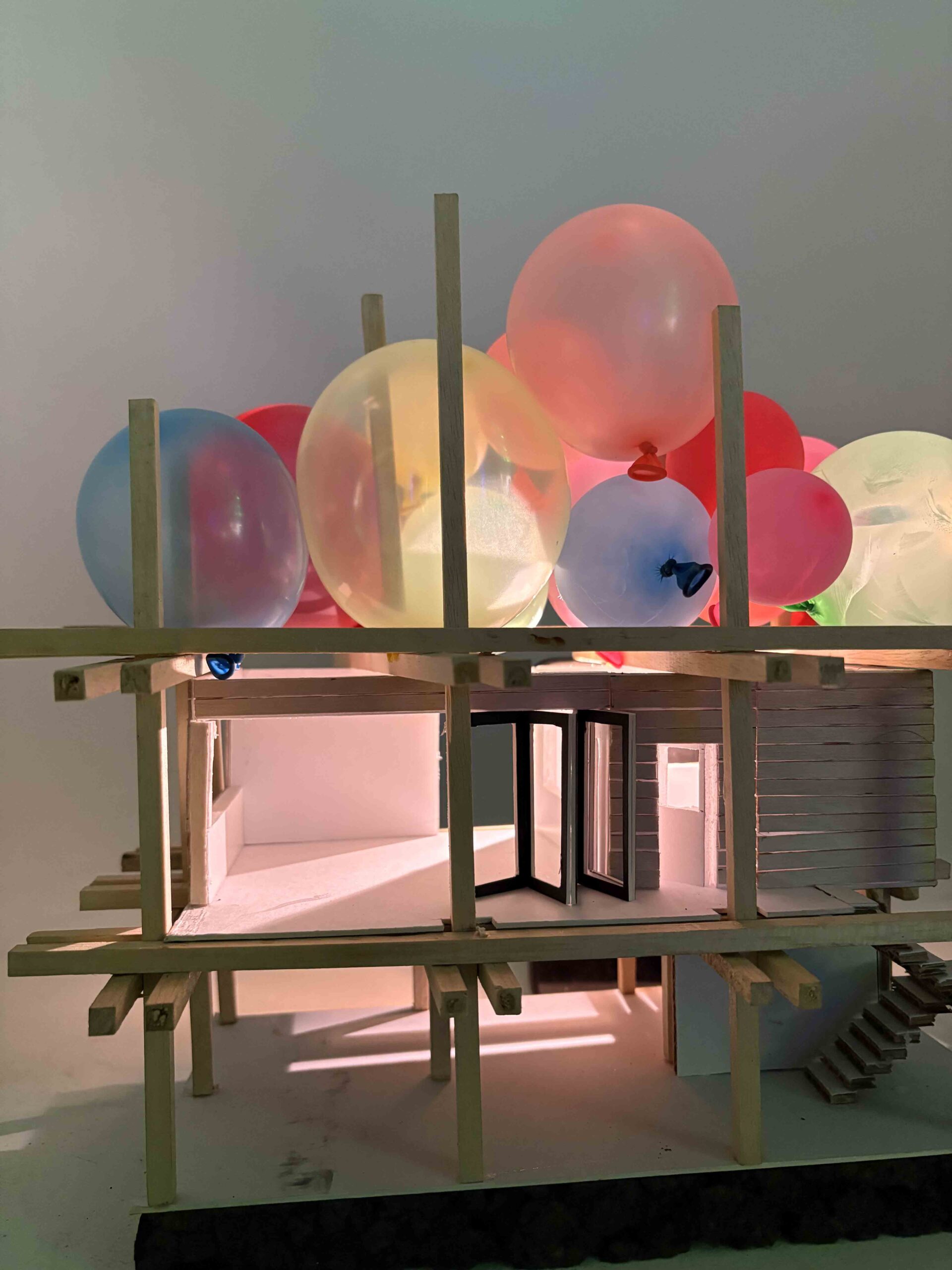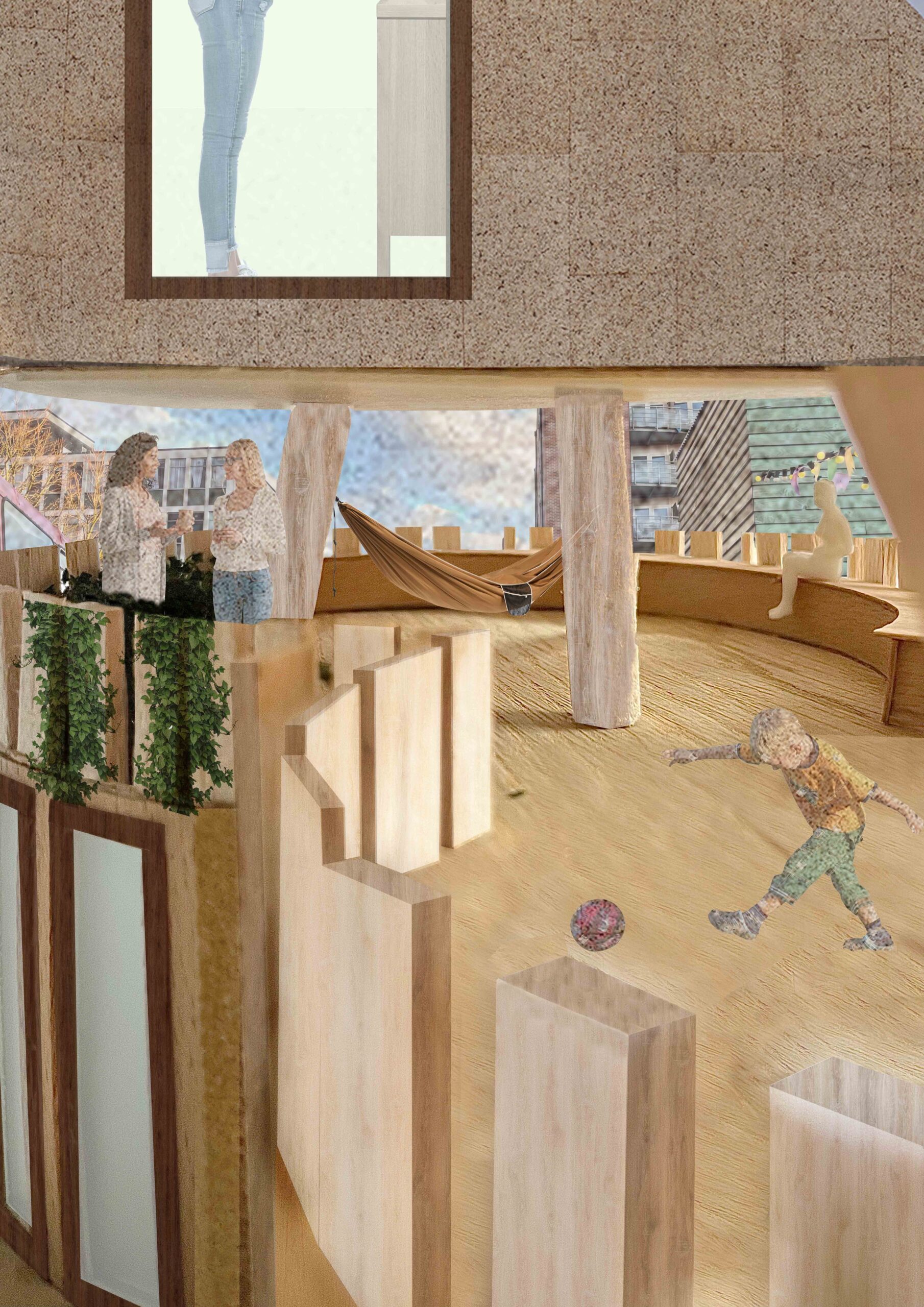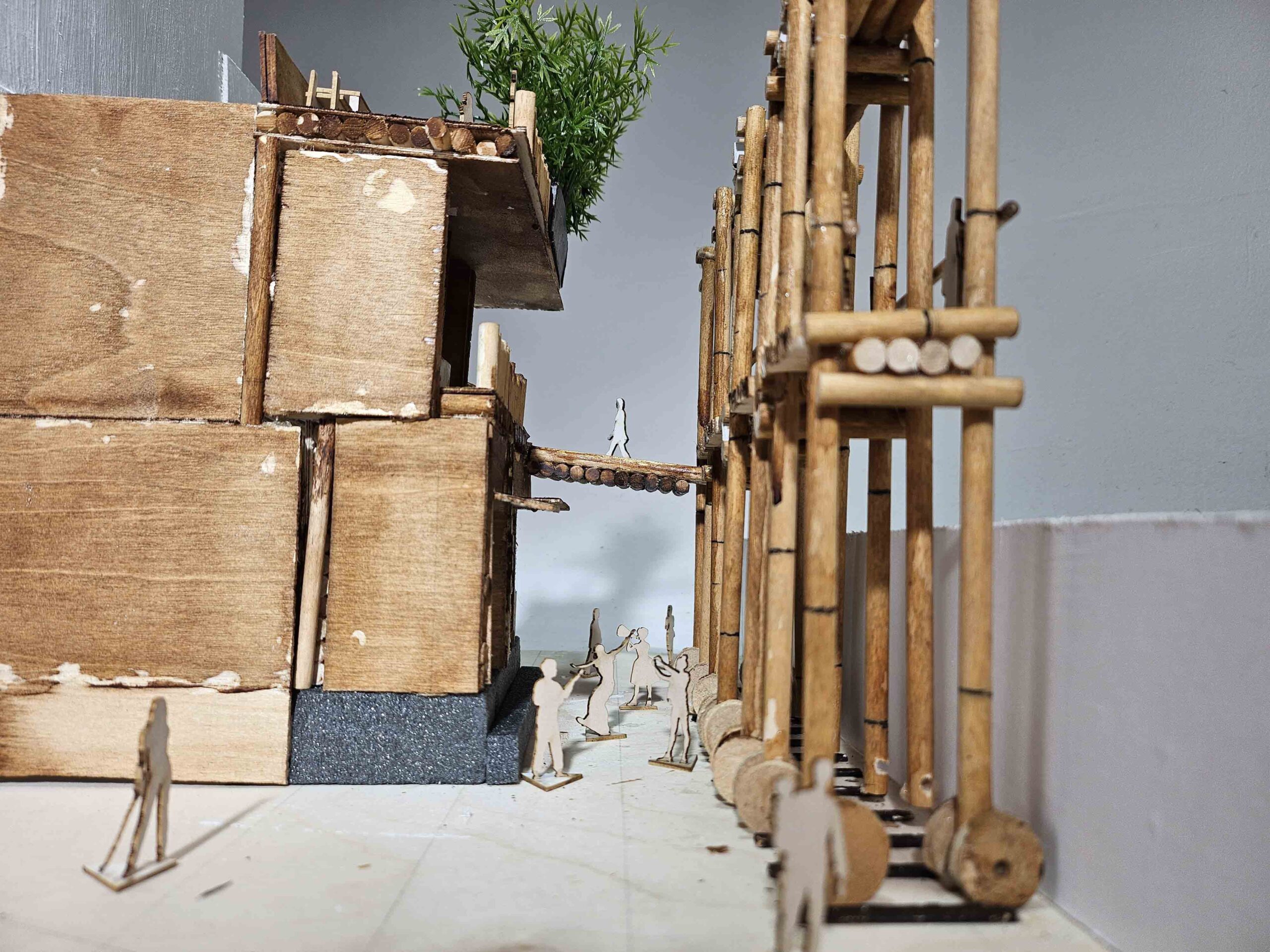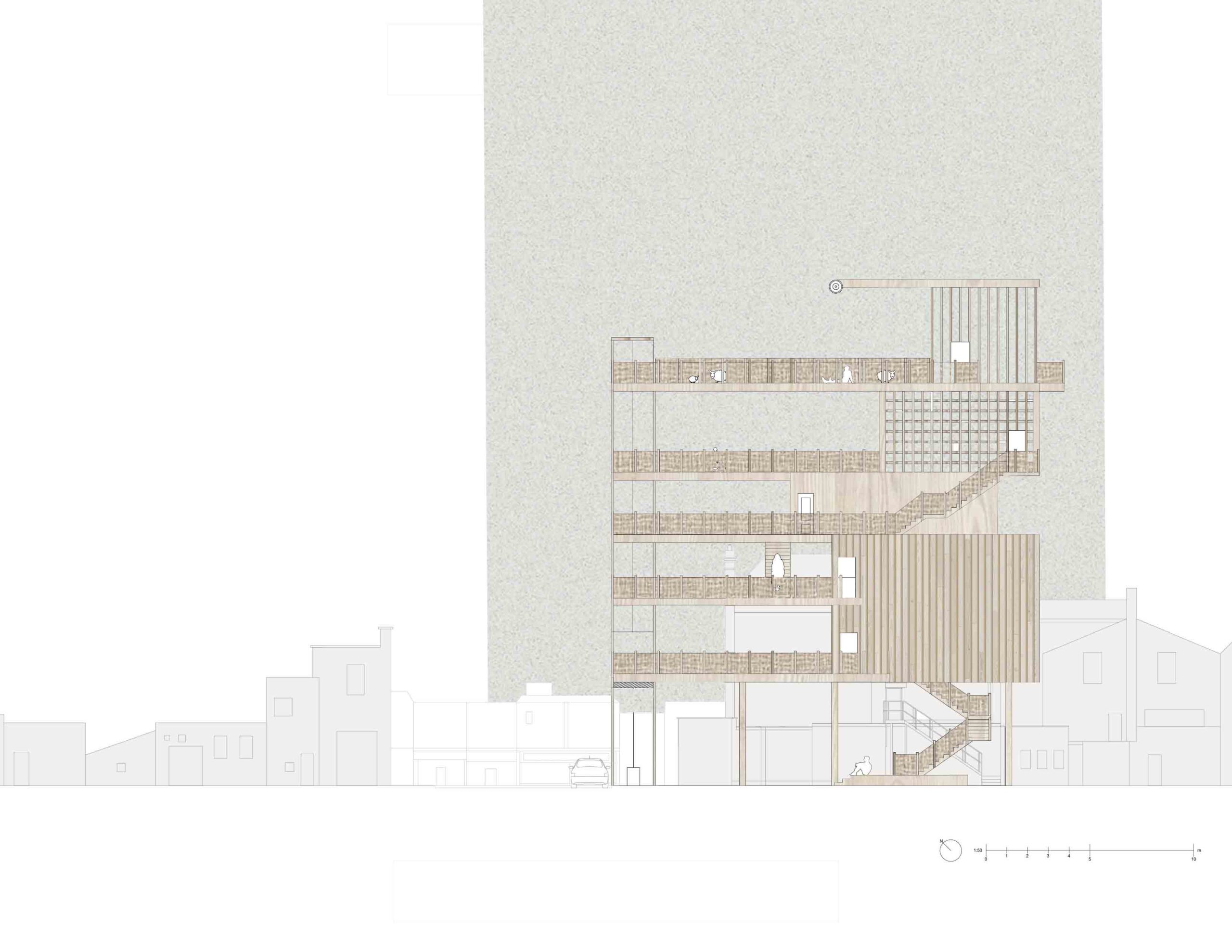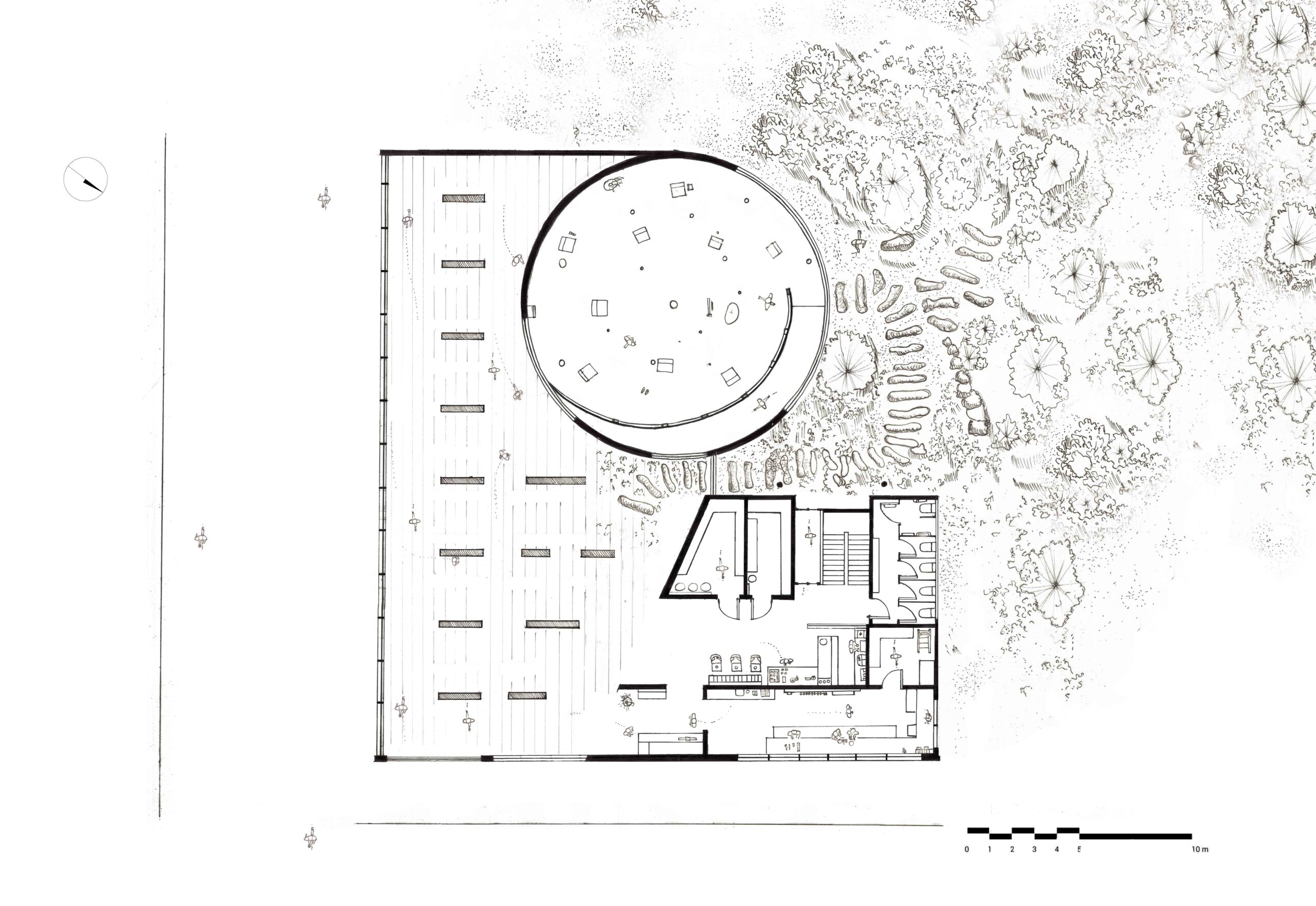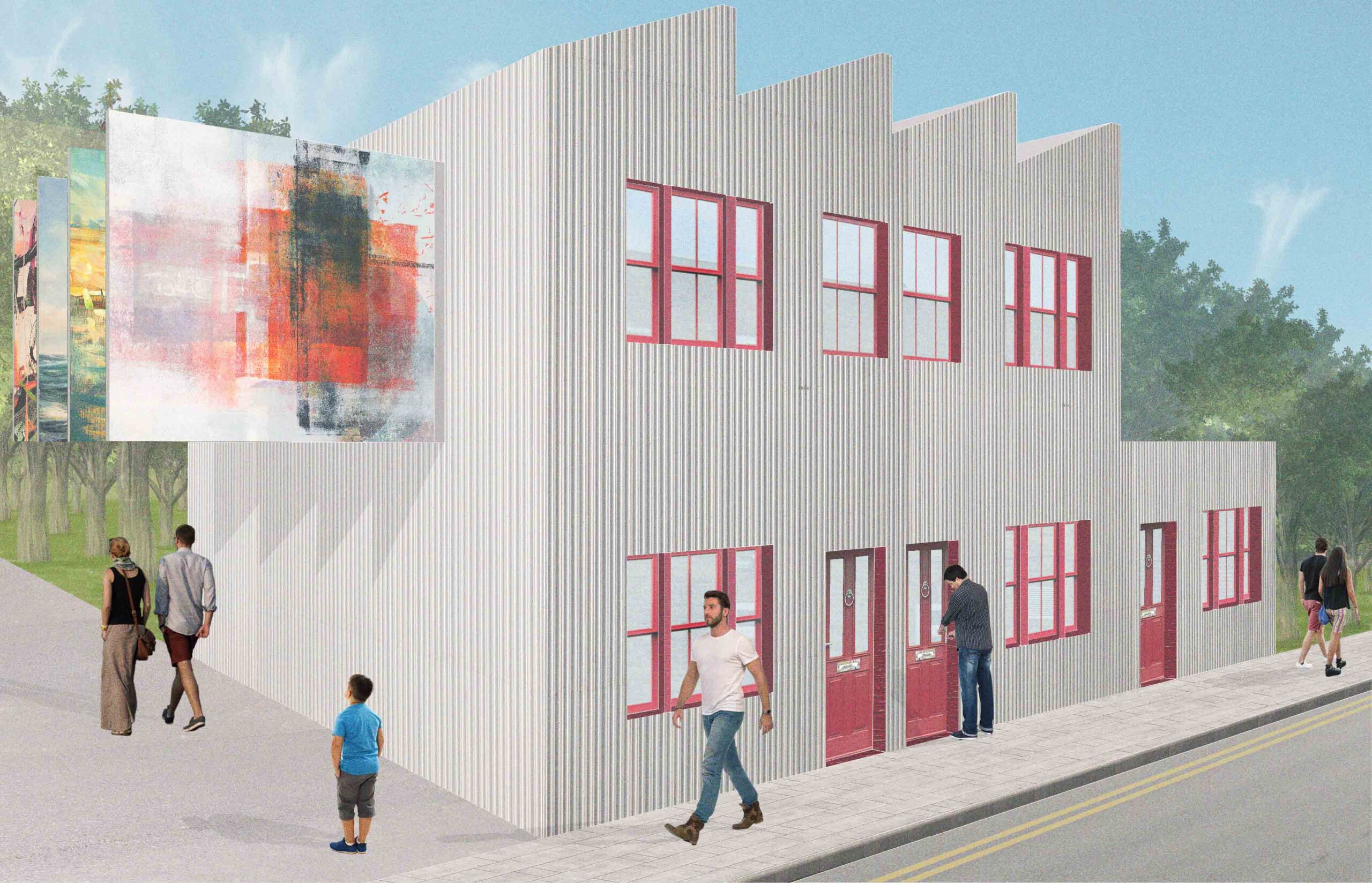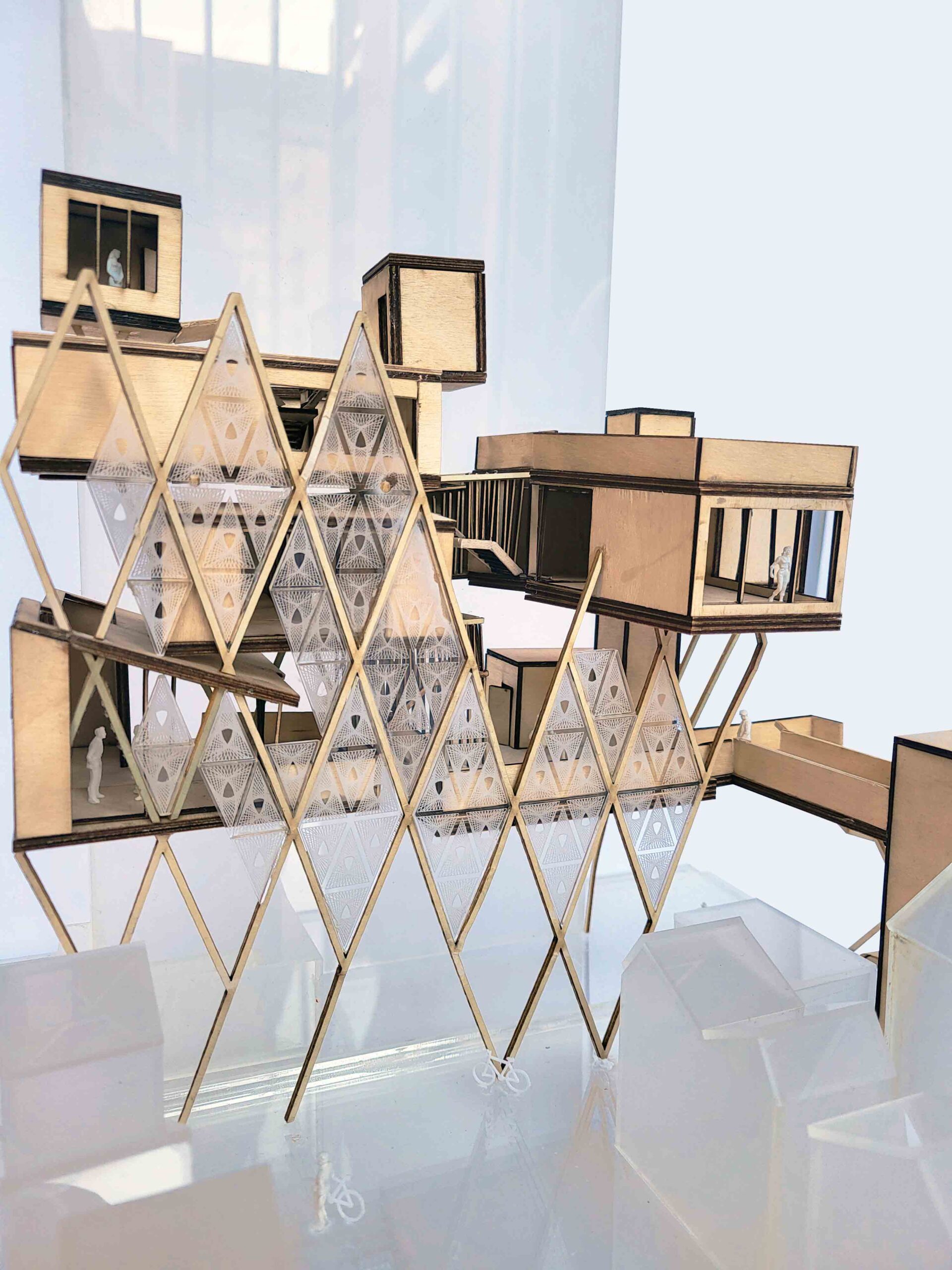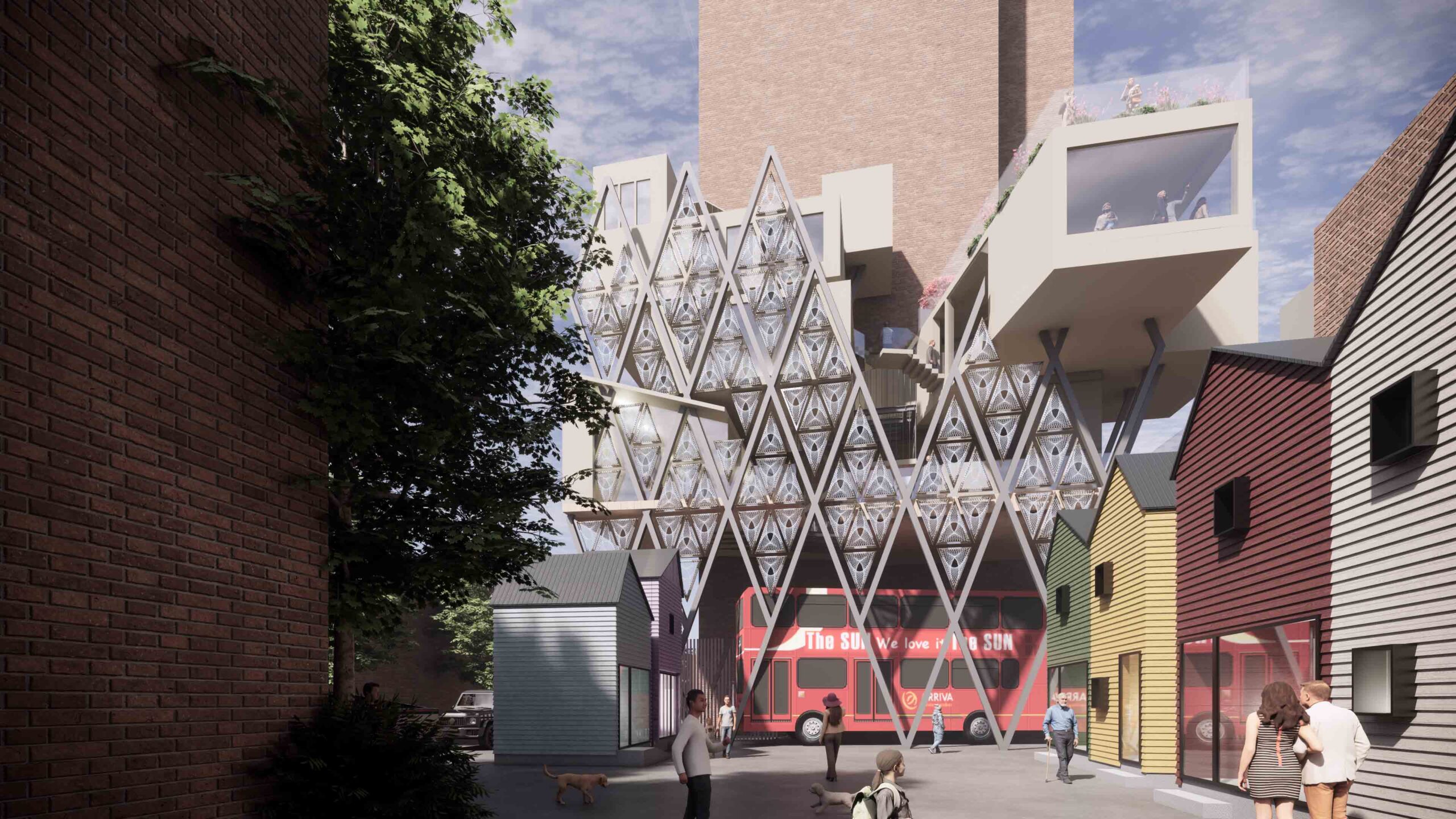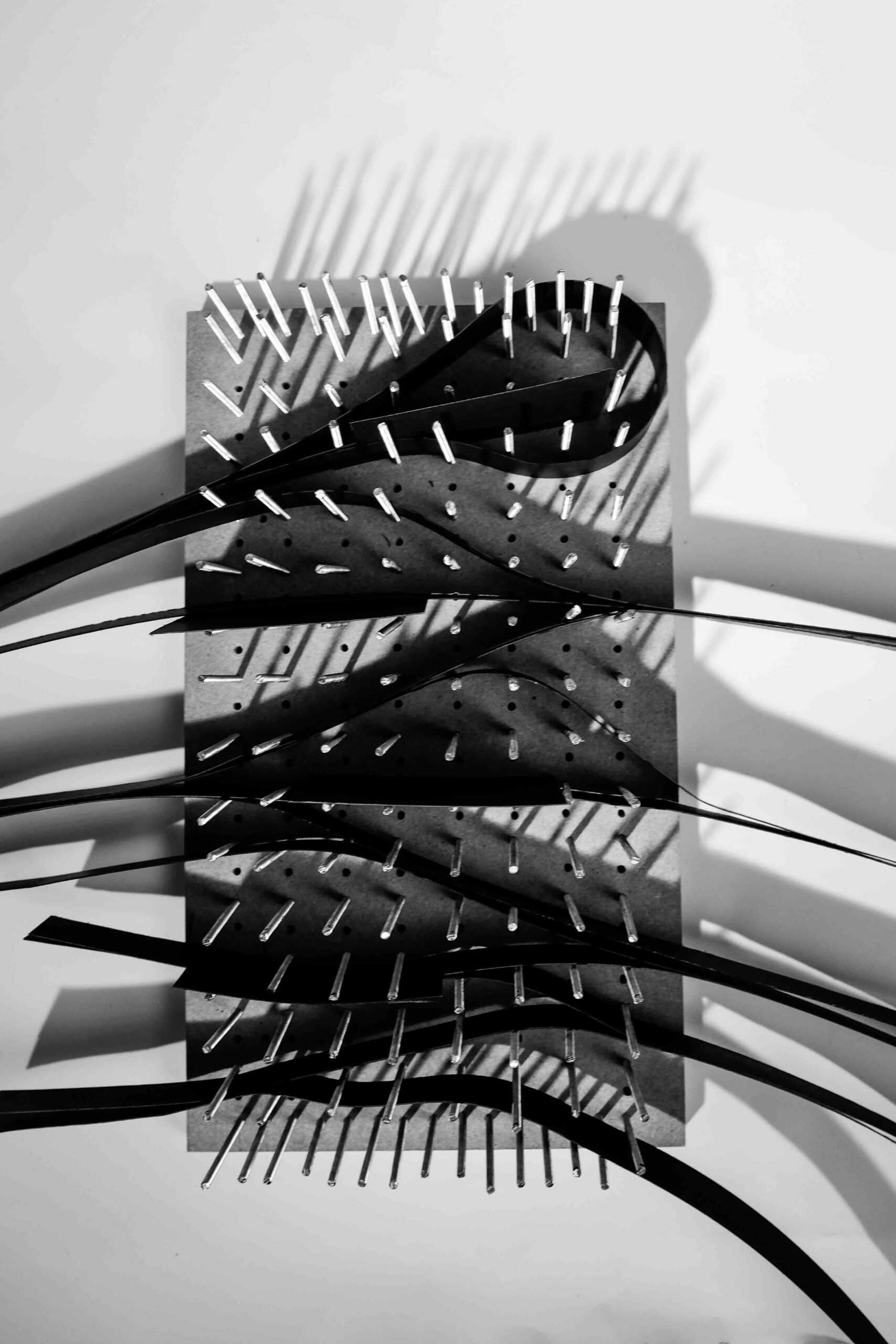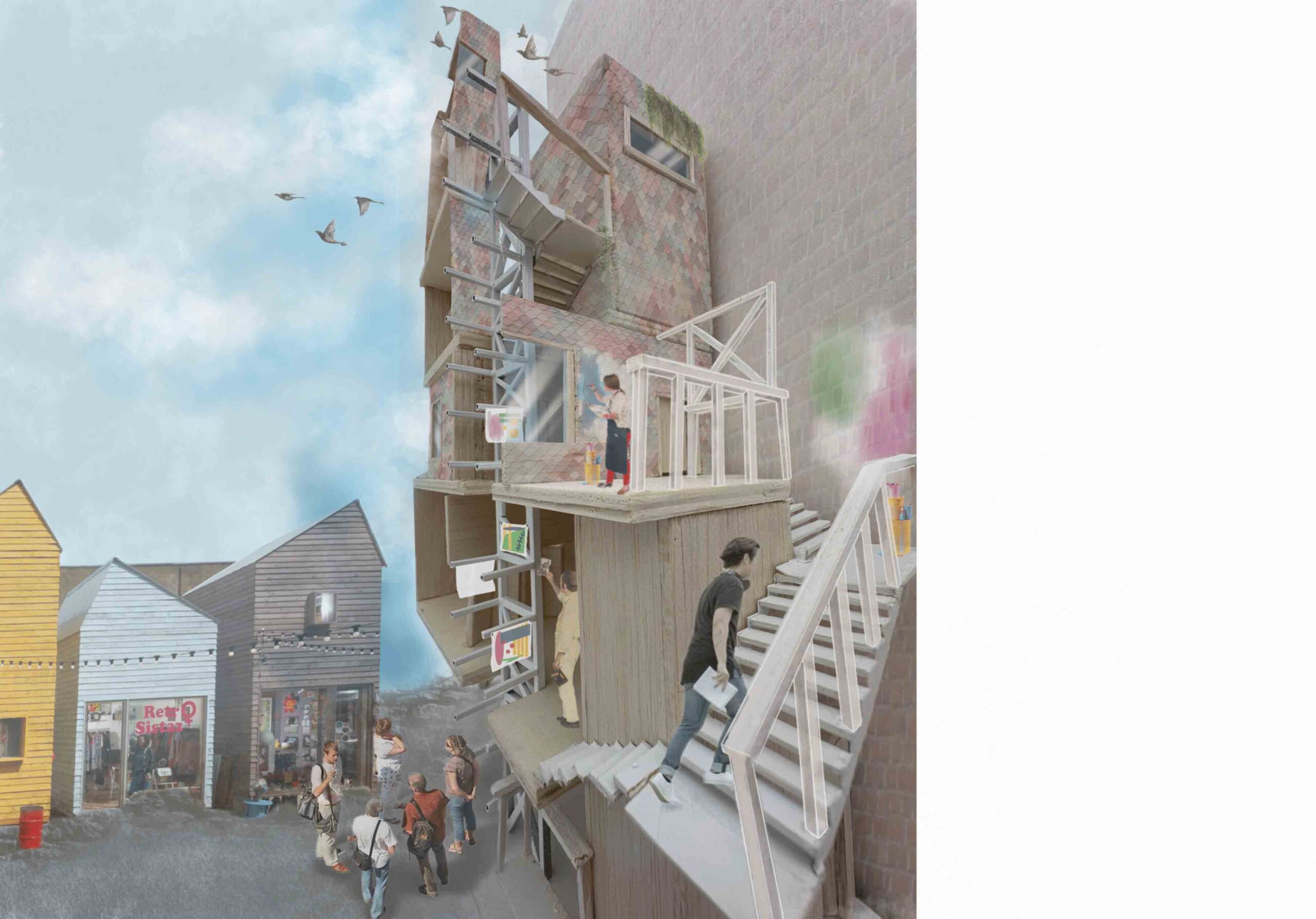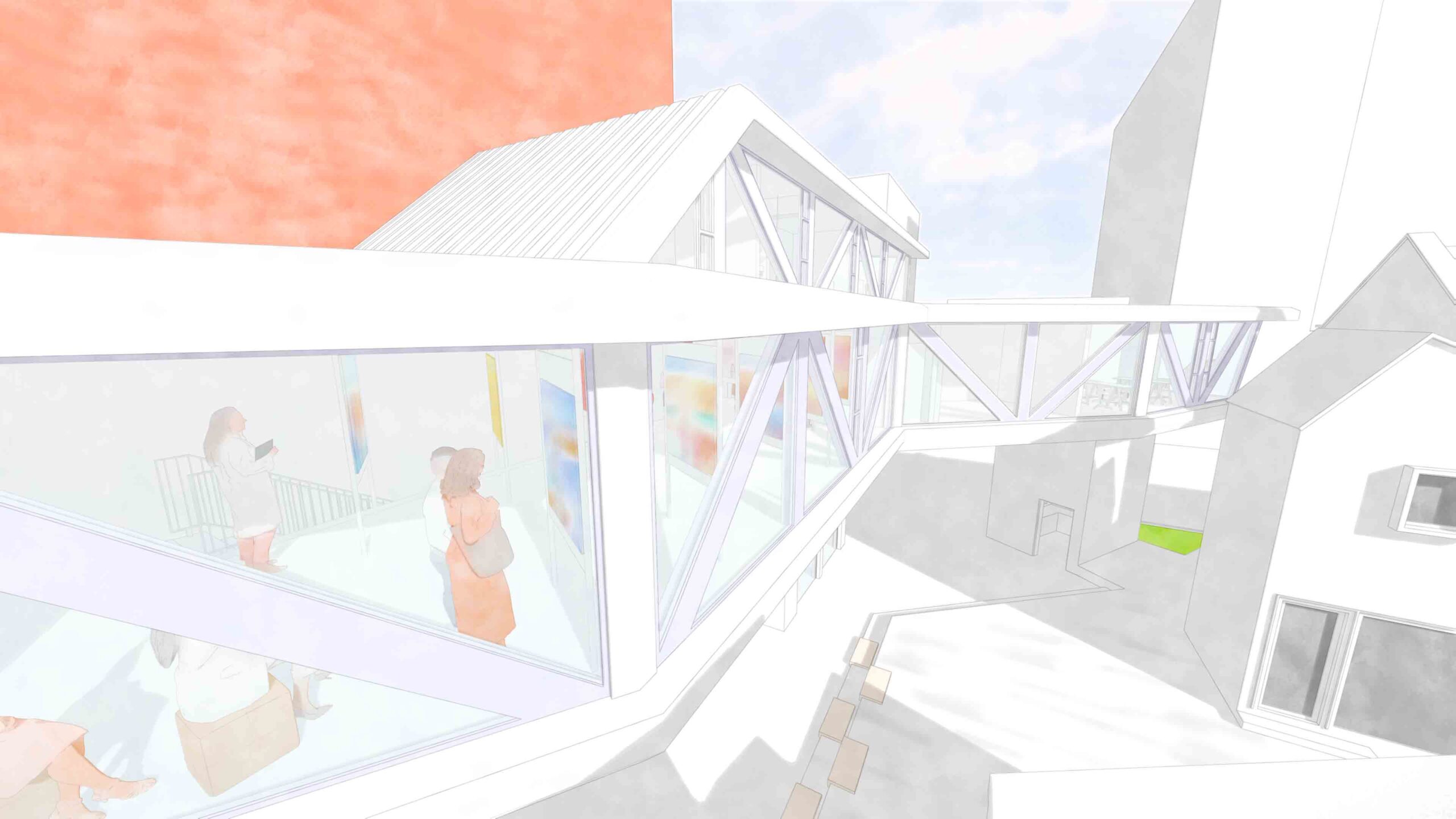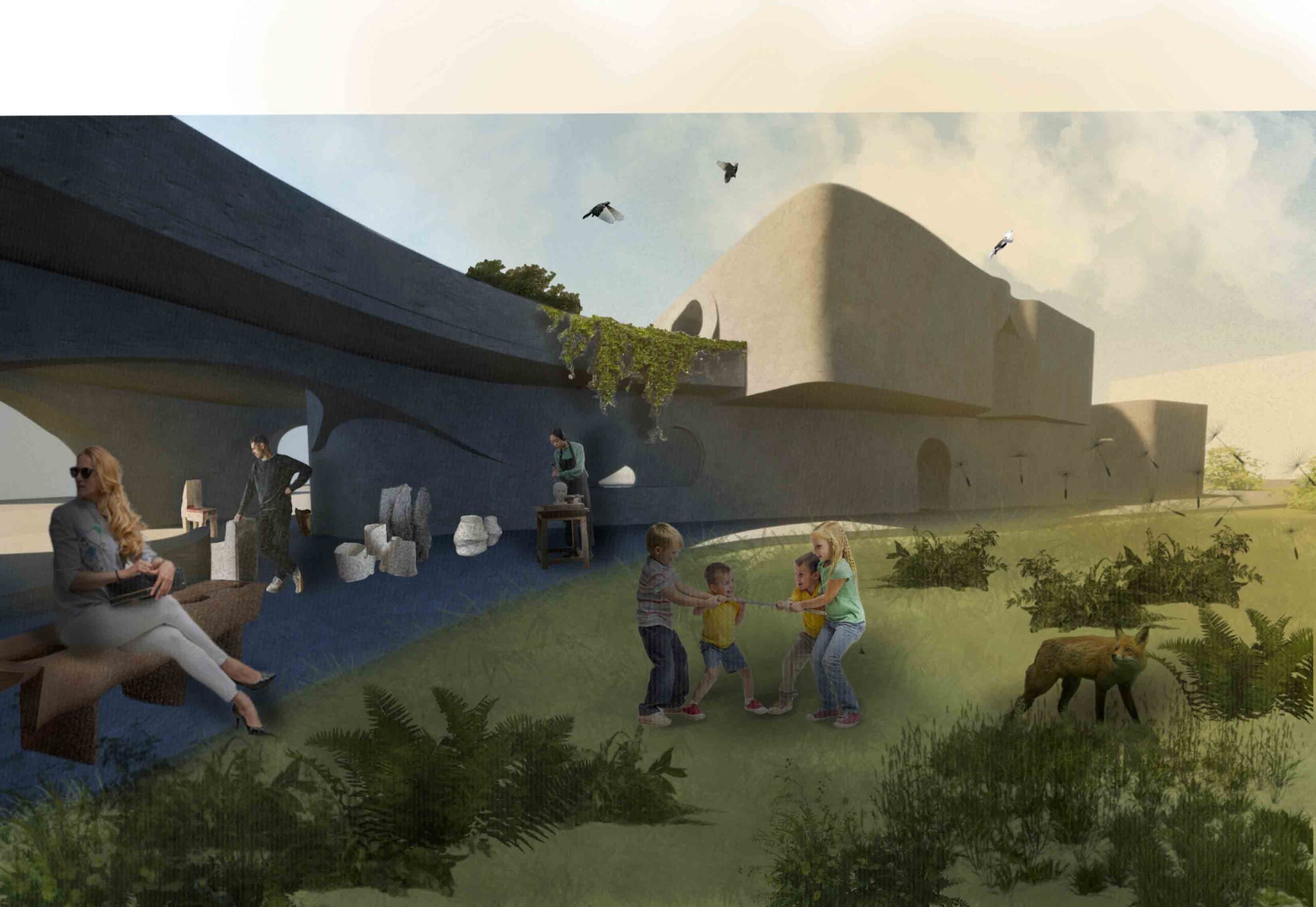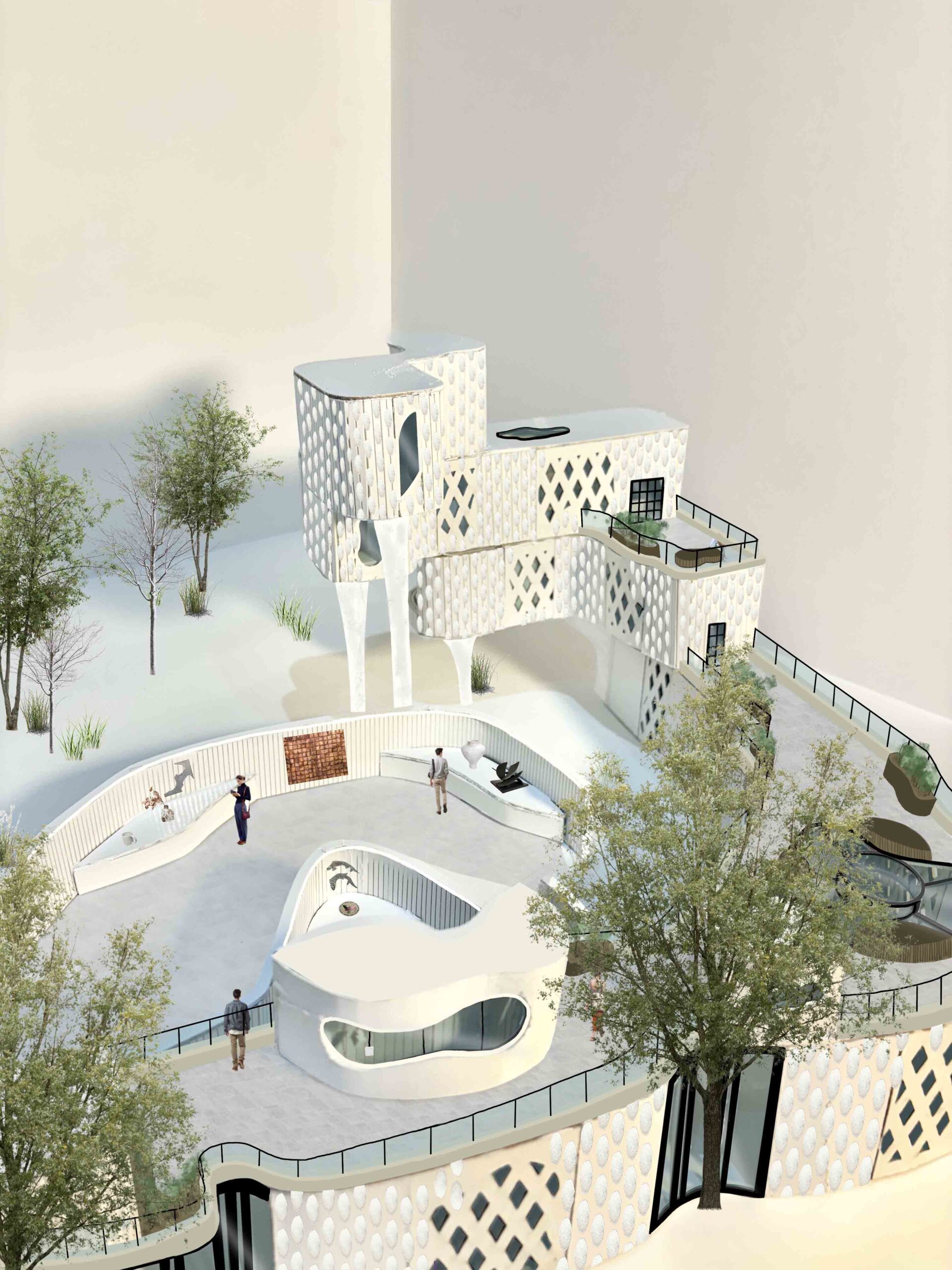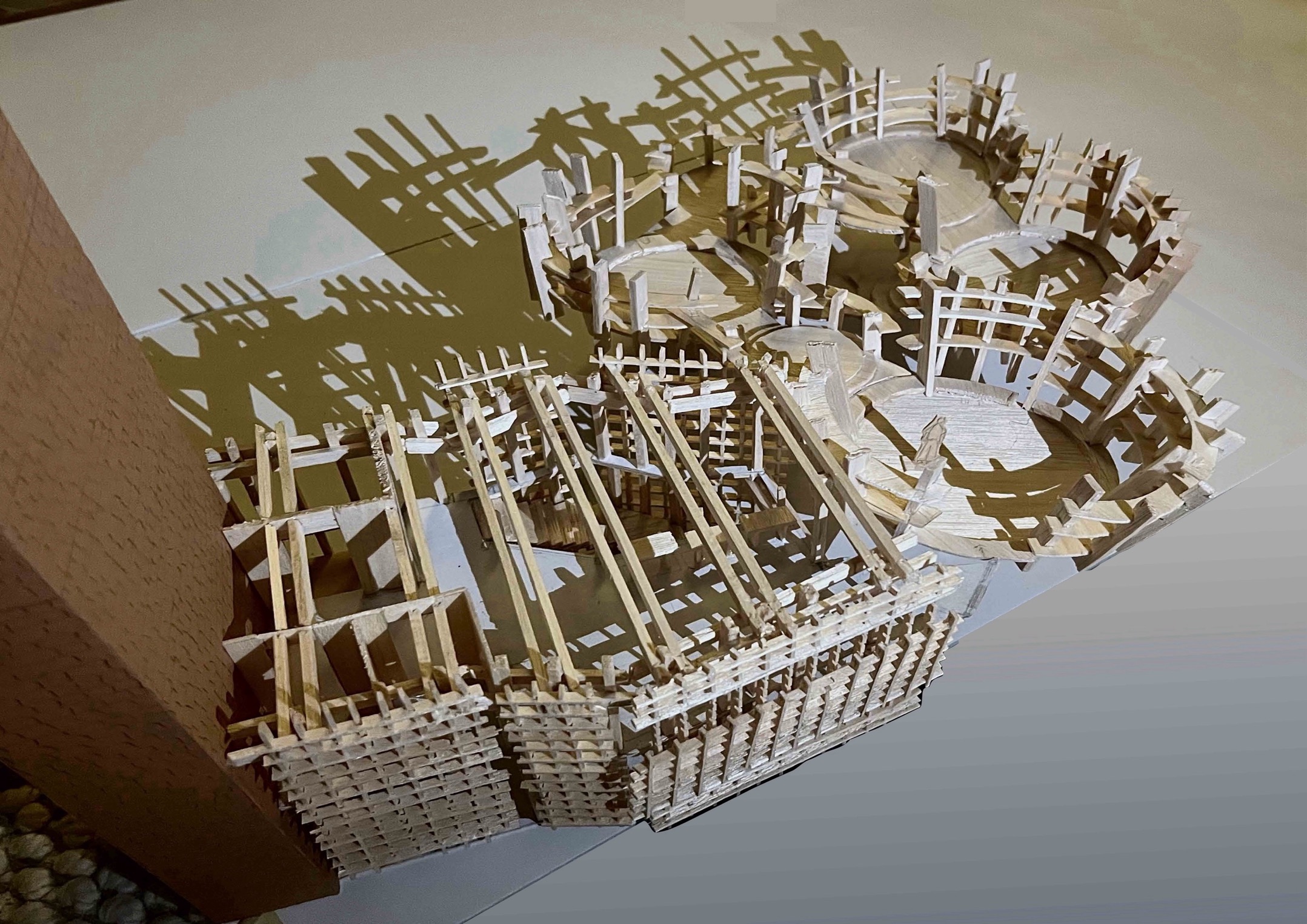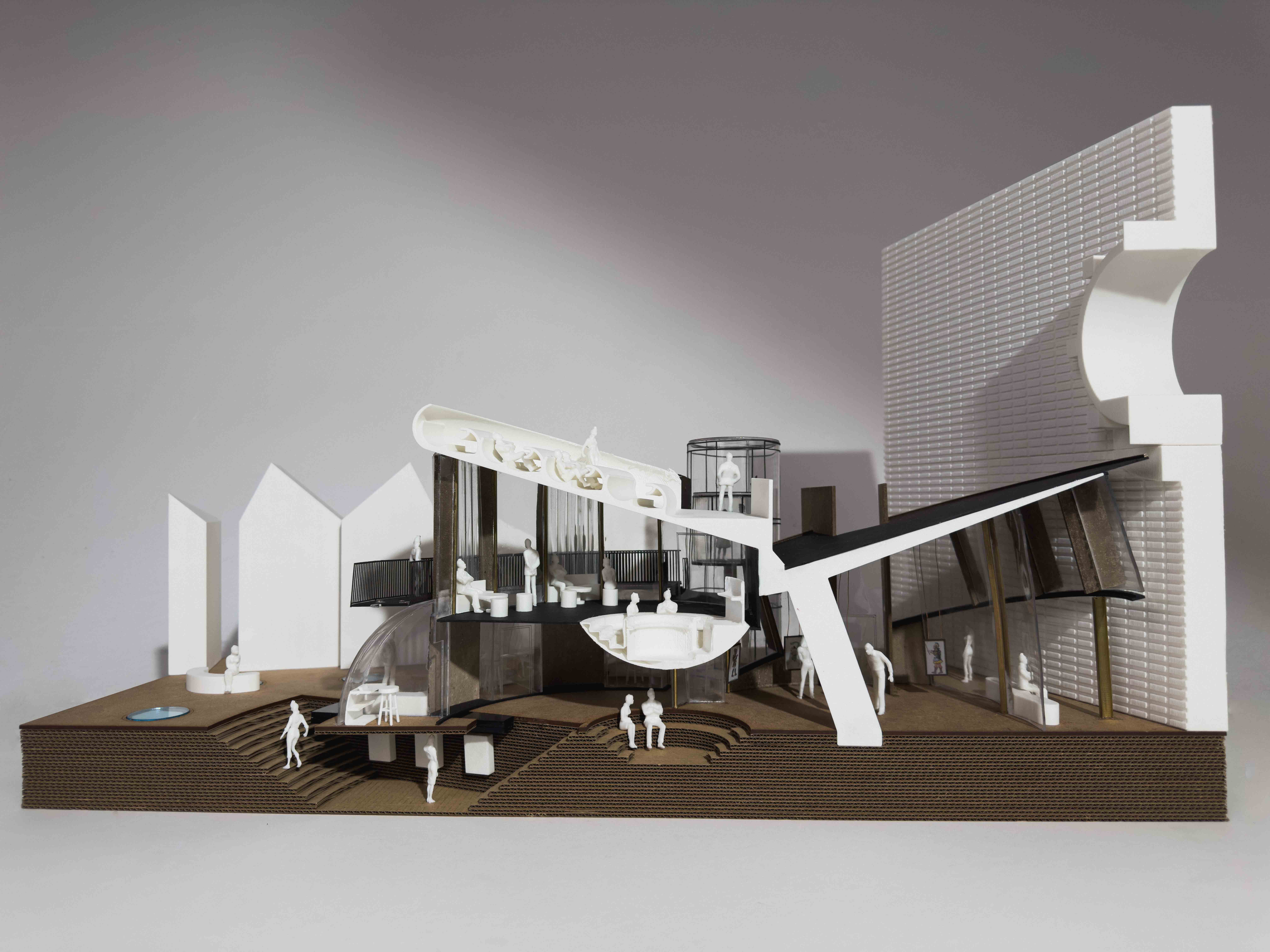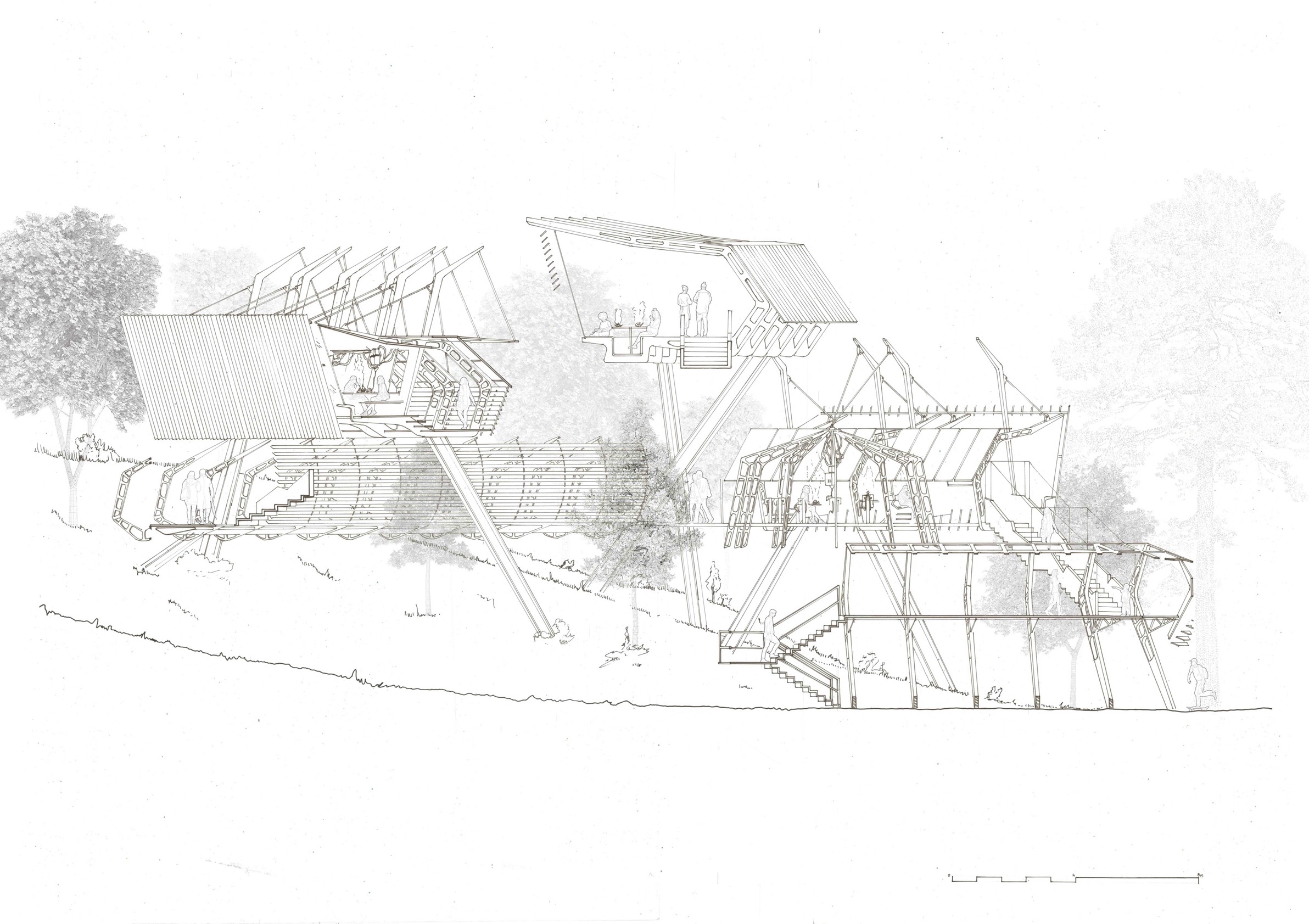First Year Architecture Studio BA Architecture
Vasilija Abramovic is an architect with a PhD in Interactive Architecture. She teaches at The Bartlett, runs Interactive Architecture Studio, and serves on editorial boards of academic journals.
Paolo Cascone is Senior Lecturer, author of African Fabbers Atlas and an AA-trained architect whose work intersects environmental engineering and ecological construction.
Alison Gwynne is a practicing architect who has designed award-winning buildings whose teaching focuses on sustainability, social enterprise and the poetic craft of making.
Jisoo Hwang is a researcher, educator and an ARB-registered architect. Working with practices including RSHP, Jisoo’s experience spans various projects from inception to completion.
Rim Kalsoum has worked on social housing and council-led projects with particular consideration for place-making. She is a member of research groups that focus on post-conflict architecture.
Paol Kemp is an architect at OMMX with a strong interest in social and sustainable construction methods. His work spans private residences, housing and exhibitions.
Neil Kiernan is an architect and educator focusing on 1st year BA. He has a continued and developing interest in the research of gender, space and architecture.
Jenny Kingston is an architect and urban designer with muf architecture/art working mainly on public realm schemes in rapidly changing areas of London.
Jaqlin Lyon is an architectural designer and educator interested in cultural, curatorial and community projects. She has worked in practices and universities in Australia and the UK.
Bongani Muchemwa is an architect, educator and co-founder of McCloy + Muchemwa. The studio explores inventive and collaborative design approaches that challenge expectations.
Richa Mukhia is a director of award-winning architectural practice M.OS Architects. She has extensive experience in the private and public sectors with a particular interest in housing design, public realm and community engagement.
Paresh Parmar is Director of Studio PYP, a practice specialising in private residential architecture that emphasises understanding people, spatial needs and sustainability.
Gabriele Pauryte is a multidisciplinary designer and architect with experience in public realm and social infrastructure projects. She works to address the climate emergency through design.
Rofayda Salem is Lecturer in Environmental Design, author in Islamic architecture and an heritage consultant specialising in the renovation of historic sites and climate-responsive designs.
Conor Sheehan is the co-founder of Studio MASH. Its global award-nominated projects champion collaborative design across the residential, commercial and hospitality sectors.
Afolabi Spence is an architect and urban strategist whose practice adopts a location-specific approach to architecture, reflecting the needs and aspirations of communities.
Matthew Stewart is an architect, and design & cultural context tutor. He is currently a doctoral researcher at Goldsmiths where he also teaches.
Richard Watson is a tutor and artist whose work has been exhibited at both the University of Westminster and the Architectural Association.
Adam West is an architectural designer interested in the relationship between making, narrative and tectonics. He is fascinated by incorporating temporal experience into design.
Jerome Wren is a senior architect at Carmody Groarke. He works primarily in the cultural and commercial sectors with a focus on material innovation and adaptive re-use.
Carine Woiezechoski is an architect specialising in environmental design. Her work bridges academic and professional practice with expertise in sustainable urban farming systems.
This year’s first year programme showcased the students’ adaptability and creativity as they tackled critical architectural themes with innovation and enthusiasm, producing work that pushed the boundaries of their learning and demonstrated their growing architectural confidence.
In Semester 1, students explored themes of circularity and reuse, using abandoned chairs as a springboard for creative investigation. Through a series of hands-on workshops, they developed core design skills as they tackled a range of focused briefs. Students began by deconstructing and reimagining discarded chairs, translating their observations into models and exploring broader questions around material reuse and sustainability. They then worked in groups refining and prototyping the designs, culminating in the construction of full-scale pieces, which were showcased in Ambika P3.
Semester 2’s briefs shifted to Wood Green, a vibrant and evolving part of London. Here, students designed spaces of cultural production, responding to a diverse set of themes including performance, reuse, and craft traditions. The projects featured on the following pages reflect the students’ dedication to creating thoughtful, site-specific architecture that responds to the concerns and provocations of their studio briefs.
GROUP A: Rim Kalsoum & Afolabi Spence
Students: Iqra Abdin, Ayub Abdulkadir, Amina Bentchakal, Rafael Da Silva, Anthony Effah-Yeboah, Mohammad Hamza Hussein, Ishraq Mohamed Juel, Yana Kalinovska, Sara Moral, Fatemeh Nikzad, Finley Pirie, Jonathan Rosenberg Magen, Julija Sevelkova, Ravisan Shanthakumar, Lavinia Sirbu, Rika Xia Lin
Many thanks to our Peer Assisted Learners Nikan Arghandehpour, Kitty Emery Rainbird and Erika Loustric
Live, Create, Engage: Oasis in the City
The decline of traditional crafts is reshaping how creatives and architects approach design, sustainability and cultural identity. After researching the Heritage Crafts Association’s work to safeguard traditional crafts, students chose an endangered craft to advocate.
Students were asked to design a site for artistic expression to provide a gateway to Wood Green’s emerging Cultural Quarter. Their designs fostered a space where makers and the public could collaborate, explore sustainable materials and build strong cultural ties. The projects reimagined the site as a cultural anchor – an oasis for creativity, learning and belonging in the city’s evolving landscape.
GROUP B: Jisoo Hwang & Richard Watson
Students: Ghayda Al-Tamimy, Richard Birtok, Renata-Cristina Constantinescu, Khadidja Derkaoui, Donya Hajiahmad, Anush Hydros, Pratham Jain, Tameem Kimeze, Gustaw Malolepszy, Giovanna Mendonca Barreto, Dania Ozsalar, Tymofii Romaniuk, Sofea Tajul Rizal, Hannah Thomas, Bogdan Vizitiu, Danni Weston
Many thanks to our Peer Assisted Learners Tara Eshghabadi and Eshe Morgan
Creative Habitat in Wood Green
Our students were tasked with designing a combined studio and living space for an artist whose work and ethos respond to the climate emergency. As a studio, we approached the brief by celebrating the artist’s imagined way of living and working, drawing inspiration from their creative process and body of work. The site, located in Wood Green, challenged students to engage with the existing urban fabric and consider the diverse user groups that intersect in the area.
GROUP C: Jenny Kingston & Jerome Wren
Students: Paraskevi Antypa, Loyd Clachar, Jiya Deol, Vadym Dekhtiar, Mary Fernando, Jacopo Ferrara, Maria Guerrero, Hope Hancock, Konstantinos Kheltubnishvili, Yaroslava Krasnoslabodtseva, Santenne Luyindula, Nora Matouk, Anna Parisi, Yogesh Patel, Shaheen Punjatherachetty, Simona Simeonova, Yizhi Zhou
Many thanks to our Peer Assisted Learners Thomas Boulton, Rona Hoxha and Xhesika Rama
Game Set Match
There has never been a greater need for places to bring people and things from different backgrounds and times together. ostering communities between neighbours, past and future fragments of the built city, or the recovery and reinvention of our social and physical fabric has become increasingly important.
Students were tasked to design a theatre for performing arts of their choice, such as dance, opera, mime, or wrestling. ach project acted as a generator for shared forms of cultural life, emerging from the activities and cultural expressions of its context and users, be they artists or designers, café owners or fabricators, audience members or chance passers-by.
GROUP D: Vasilija Abramovic & Matthew Stewart
Students: Uranoos Azimee, Aaliya Begum, Zerda Celebi, Abdulatif Ghani, Athanasios Gravanis, Elenia Harrisskitt, Farhim Islam, Omid Khoram, Tobey Loft, Melina Makou, Mitra Mehani, Chan Phan, Dana Qousi, Radhika Sapariya, Rojan Shahin far, Eden Zarbailov
Many Thanks To Our Peer Assisted Learners Sarah Muldoon and Mara Sendroiu
Wasted Phantasms
Our project this year was to design a building for an artist that also included a public space for a community group in Wood Green that responded to the theme of ‘waste’.
The artist’s practice was informed by a broad take on the idea of waste. We began by researching the spatial and material needs of the chosen artists and how these intersected with the wider requirements of our community groups. The resulting designs combined a variety of live/work studio spaces, at different scales, with a mixture of public and private areas.
GROUP E: Bongani Muchemwa, Richa Mukhia & Conor Sheehan
Students: Maryama Abdi, Gamid Aliev, Safah Aslam, Gabriela Bakun, Lyla Eccles-Meoded, Einas Heidari, Salma Hersi, Samanzer Hossain, Raiyan Jamil, Charlie Jewiss, Luke Lakandula, Jerome Lefteri, Shoon Oo, Andreea-Valentina Pasol, Antonios Pavlidis , Anna Russo, Meanwell Umayam, Deeda Zadran
Many thanks to our Peer Assisted Learners Milan Lad and Yasmin Pathan
The 5pm Shift
This semester, The night became a canvas for innovation and imagination as we explored how cities transform after 5PM, when the hustle of the day gives way to the possibilities of the evening. The aim was to create architecture to inspire connection, creativity and comfort after dark to redefine the urban nightscape; to design spaces that foster inclusivity, excitement and discovery.
These projects don’t merely adapt to the absence of light – they embrace and celebrate it, offering bold visions for places that come alive in the twilight and thrive long after the sun sets.
GROUP F: Paol Kemp & Gabriele Pauryte
Students: Alaara Aydar, Ashvin Balakrishnan, Francesca Belluzzo, Emilia Dyl, Cynthia Gong, George Hancox, Ramisa Hussain, Aasbah Kazmi, Guanhua Liang, Maya Makos Tracz, Patrik Marku, Samira Mukhtar, Kahish Puri, Mariam Refaat, Morayoninuoluwa Samuel, Charlie Sparks, Nicola Westfalewska, Zain Zubair
Many thanks to our Peer Assisted Learners Khushi Patel and Elis Reah
Puppets in Protest
Theatres, like puppets, are operated by many hands to tell the stories of multitude voices and cultures for all to experience.
Theatre, performance and their production were our subject this term, explored through the making of puppets and bought to life in response to themes, issues and observations form Wood Green. This informed the approach the students took to design a community theatre; a theatre to provide a puppet and set design workshop that responded to the site, connecting it back to the community.
GROUP G: Neil Kiernan & Jaqlin Lyon
Students: Sajida Akther, Iyaaz Alam, Kivinoto Awomi, Musfikur Baqkar, Amirlan Battulga, Elif Cagdas, Roshni Chaggar, Polina Gokhner, Faith Graham, Erlind Himallari, Maham Khan, Ting-Ting Lee, Maxwell Maduaka, Raja Omer, Theofilos Petsas, Atharva Phadnis, Julia Romeo, Kamala Schildge
Many thanks to our Peer Assisted Learners Taja Dennis, Joseph Kuforiji and Kaspar Rechardt
Ordinary Articles / Readymade Resilience
Examining value in the everyday, this studio framed making as a means of social and cultural reflection. Students were asked to select a ‘ready-made’ object of particular interest from the Wood Green area while identifying a strong social, cultural, economic or historical narrative.
Through a series of site-specific spatial installations, students pushed public and private interfaces before proposing a creative maker-space and caretaker’s residence. Taking cues from collage and bricolage, we viewed the city as a stage and the street as a gallery.
GROUP H: Paresh Parmar & Rofayda Salem | Paolo Cascone & Carine Woiezechoski
H1 Students: Muhammad Ahmed, Mansour Alahmad, Wahiba Bashir, Rosy Bird, Adam Comanescu, Kulsum Dewji, Jonathan Finlay, Alice Haileslasse, Amelie Katechia, Nazia Khaleeq, Charlotte Kinch, David Lawson, Zara Makwana, Rejuanna Monrose, Dilan Patel, Alexandra-Gabriela Stefaniu, Lola Vukovic, Nathaniel Whatley
H2 Students: Mohamed Ahmed, Dias Akhamadi, Francesca Ashby, Melissa Bolat, Ethan Bradford, Victoria Cangialoci, Christian Curcuera Zuniga, Savannah Forsythe, Teodor Virgil Gheorghe, Logan Harrison, Yingman Huang, Nanthiya Jaichuang, Loveneet Kaur, Akbar Khan, Yara Khasrawe, Olesya Klimuk, Zin Leung, Neil Malaney, Maya Martinez La Rosa, Olukemi Odunfa, Zara Sahfiq, Konstantina Tarousa
Many thanks to temporary studio tutor Minerva Fadel, and to our Peer Assisted Learners Christopher Briggs, Sandra Dus, Samuel Calkins and Eduoardo Ripamonti
Artist Residency & Public Platform
Our studio is concerned with the environment and the climate crisis. nderstanding and responding to environmental conditions is key to this environmental design-led studio.
The students were asked to design an artist residency and public platform to benefit the local and wider community, responding to environmental parameters. Following rigorous site research and investigations, concepts were generated around spatial needs, contemporary art forms, innovative co-production and exhibition spaces to serve Wood Green’s creative community. The proposals considered passive strategies, circularity of materials and energy generation to help shape a cleaner community in line with Haringey Council’s vision.
GROUP J: Alison Gwynne & Adam West
Students: Yahia Alali, Latifa Alameri, Jhonas Castillo, Zoe Patricia Charles, Po-Jui Chen, Janelle Glen, Franka Hahijary, Graham Hall, Imen Khenchelaoui, Philip Loveridge, Yasmina Madani, Adriana Naranjo Benazar, Cosku Ceylin Olcek, Orestis Papadakis, Emel Rustem, Mahir Salehin, Abigail Senior, Loukas Shimitras
Many thanks to our Peer Assisted Learners Jessica Gabriel and Marina Ioannou
Magic, Myths and Marionettes
Reflecting on the idea ‘what constitutes a performance?’ students were prompted to shift away from traditional theatre typologies of auditorium and stage and consider architecture as a type of performance, using storytelling as a design methodology. The proposals examined how stories are told, the atmospheres they create, and the materials used to tell them.
Exploring radical and unusual ways of creating performance spaces, the final proposals embraced ideas about rehabilitating art forms that are in decline. Using performance as a bridge to bring communities together, they envisioned unique experiential enterprises as a means to intervene culturally and physically.










